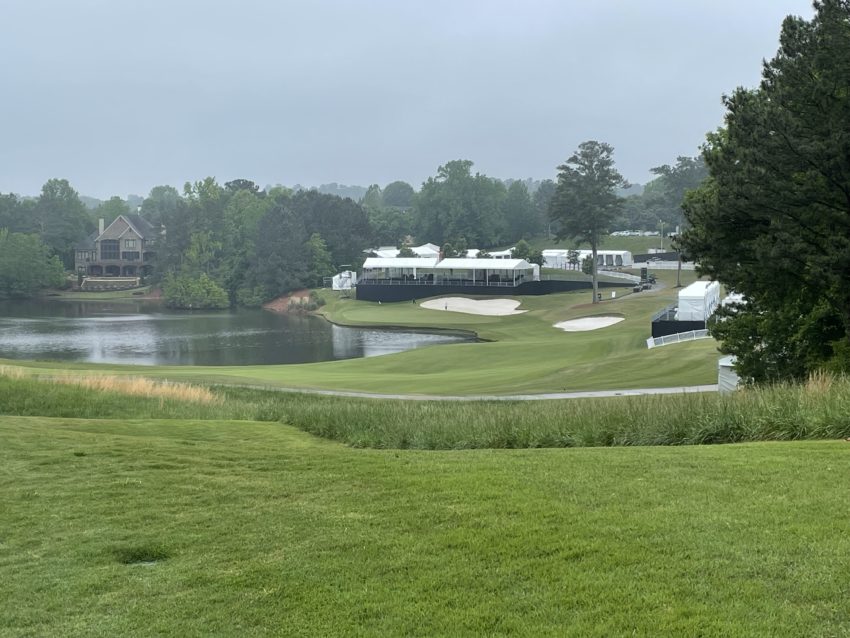
TPC Sugarloaf (Meadows/Stables) – Played April 2023
- Rankings: None of my four lists
- Location: 2595 Sugarloaf Club Drive, Duluth, Georgia
- Year: 1997
- Architect: Greg Norman
- Course Access: Private
- Walking Rules: Carts Available
Score Card Information:
- TPC: 7,322 yards, Par 72, 76.1 Rating/150 Slope
- IV: 6,861 yards, Par 72, 73.9 Rating/145 Slope
- III: 6,444 yards, Par 72, 71.8 Rating/140 Slope
- II: 5,808 yards, Par 72, 68.8 Rating/133 Slope (Men’s), 74.9 Rating/140 Slope (Women’s)
- I: 5,066 yards, Par 72, 65.4 Rating/123 Slope (Men’s), 70.6 Rating/130 Slope (Women’s)
TPC Sugarloaf has been a part of my golf knowledge for some time, going back to the PGA Tour’s BellSouth Classic that was played from 1997-2008. I even attended the tournament with my Grammy way back when. The club has stayed in the pro golf world by hosting the Champions Tour’s Mitsubishi Electric Championship since 2013.
The club has three nines (Meadows, Stables, and Pines), all designed by Greg Norman. The PGA Tour played the Meadows and Stables, while the Champions Tour plays the Meadows and Pines.
With that backdrop, it was cool for me to get to see TPC Sugarloaf “inside the ropes” and play the holes I had seen on TV for much of my youth. On an overcast day, I headed down to Duluth, which is just north of Atlanta. Thankfully, traffic wasn’t too bad and the rain held off for the majority of my round. Let’s get into the course tour.
I played the Meadows and Stables nines. The progression of courses here is the Meadows first and then the Stables.
Hole 1 – 556 yards – Par 5
The round starts with a long par five that most people will take three shots to reach. You’re presented with a wide fairway but there are bunkers in play on each side. If you hit the fairway, keeping your second shot up the right side provides the best angle to the green.
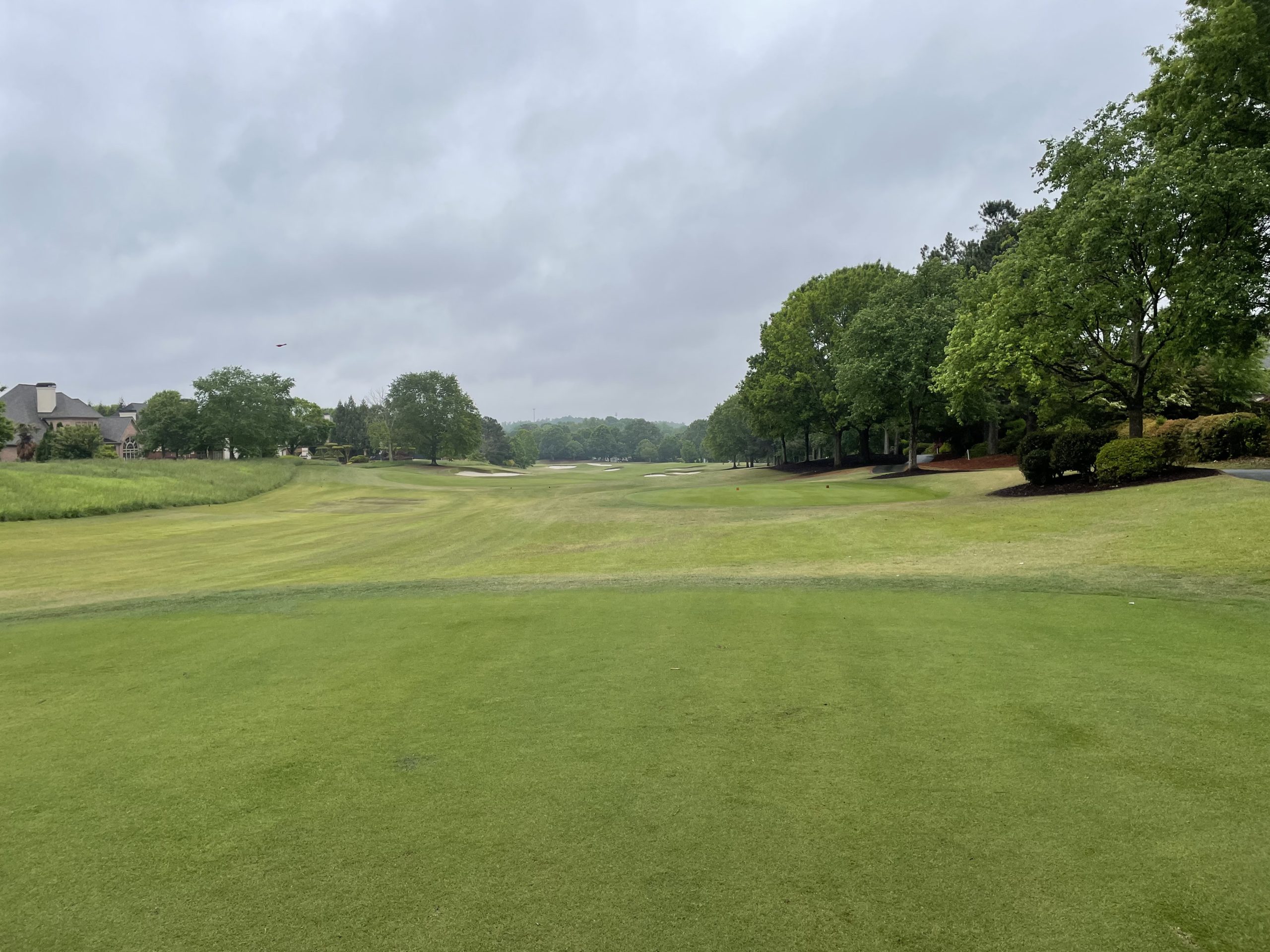
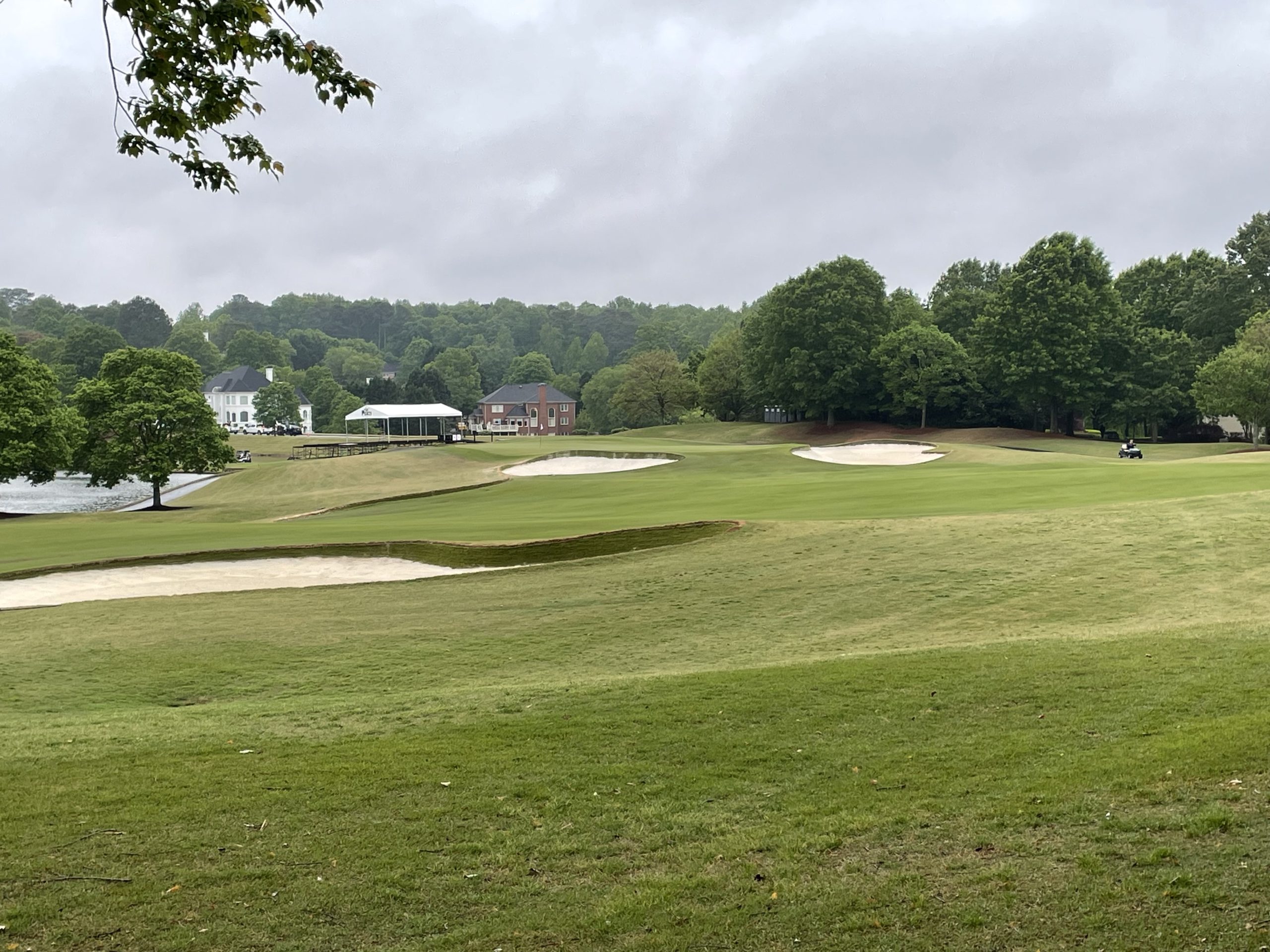
Hole 2 – 178 yards – Par 3
There is not much of any bailout here. A small sliver exists on the right to catch some shots. I can only say that it’s best to hit the green.
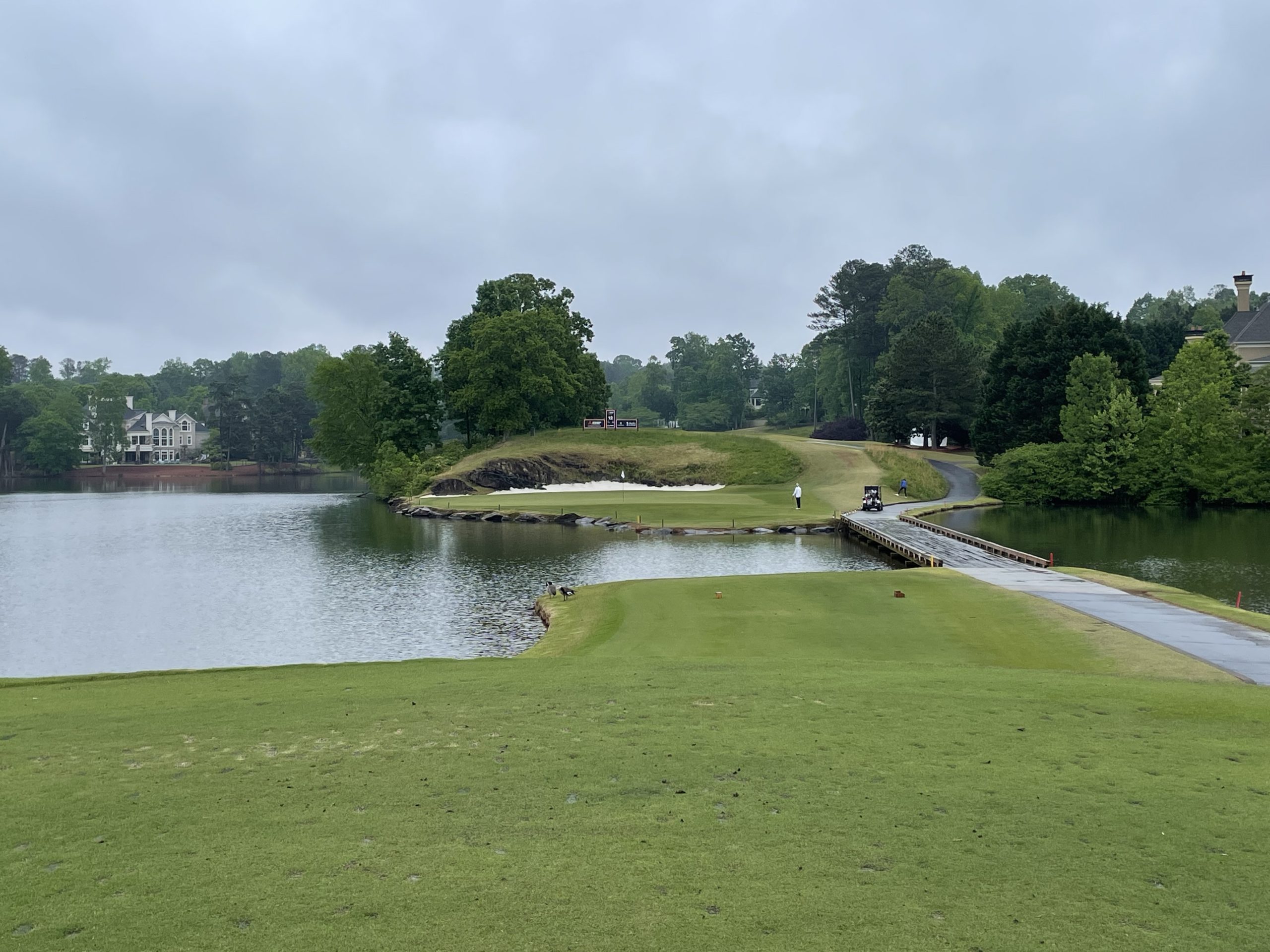
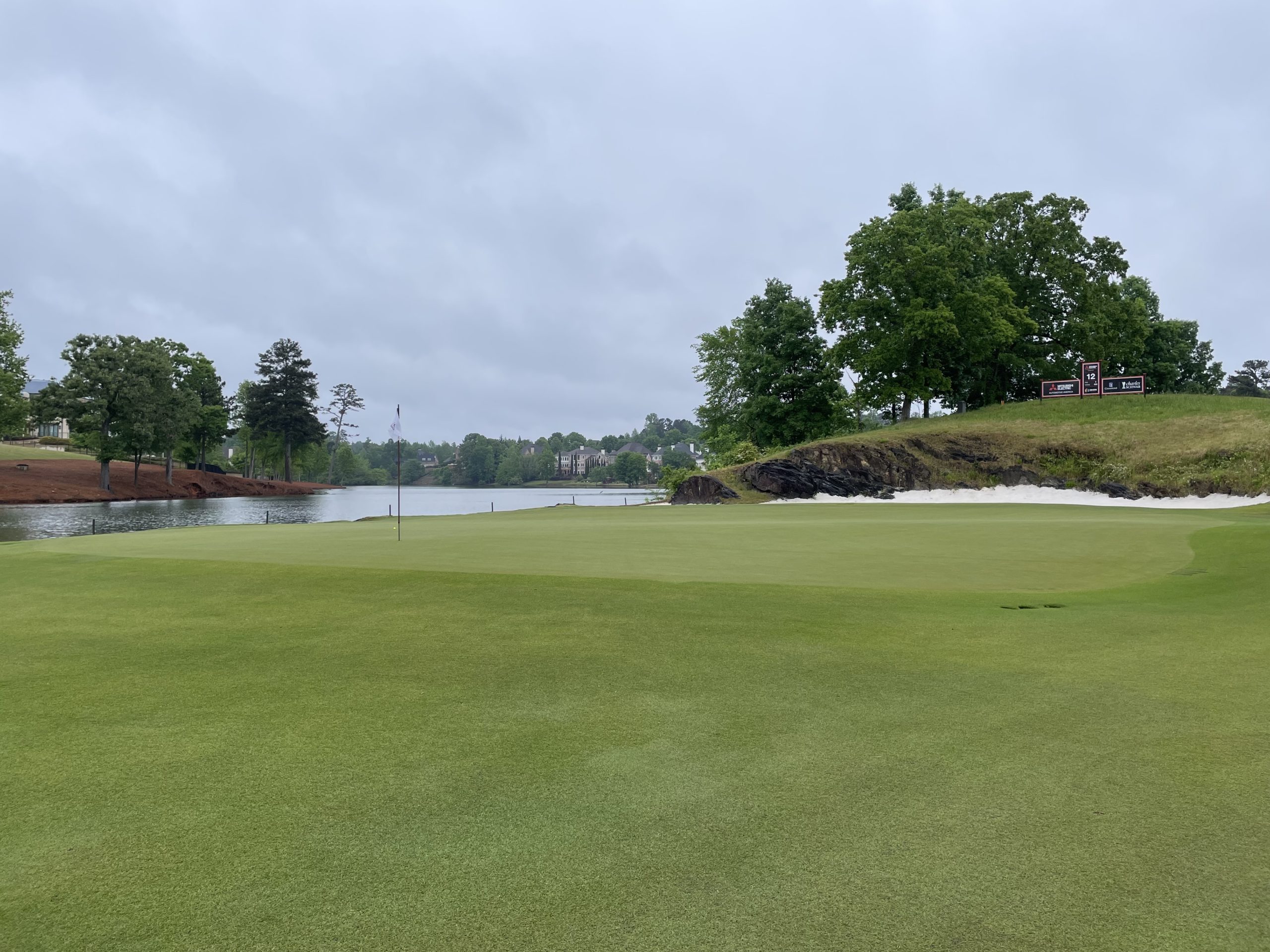
Hole 3 – 400 yards – Par 4
This is a tough hole from the beginning. Depending on your length the line is at the bunkers or left of them. The approach favors a fade to take advantage of the contours of the green.
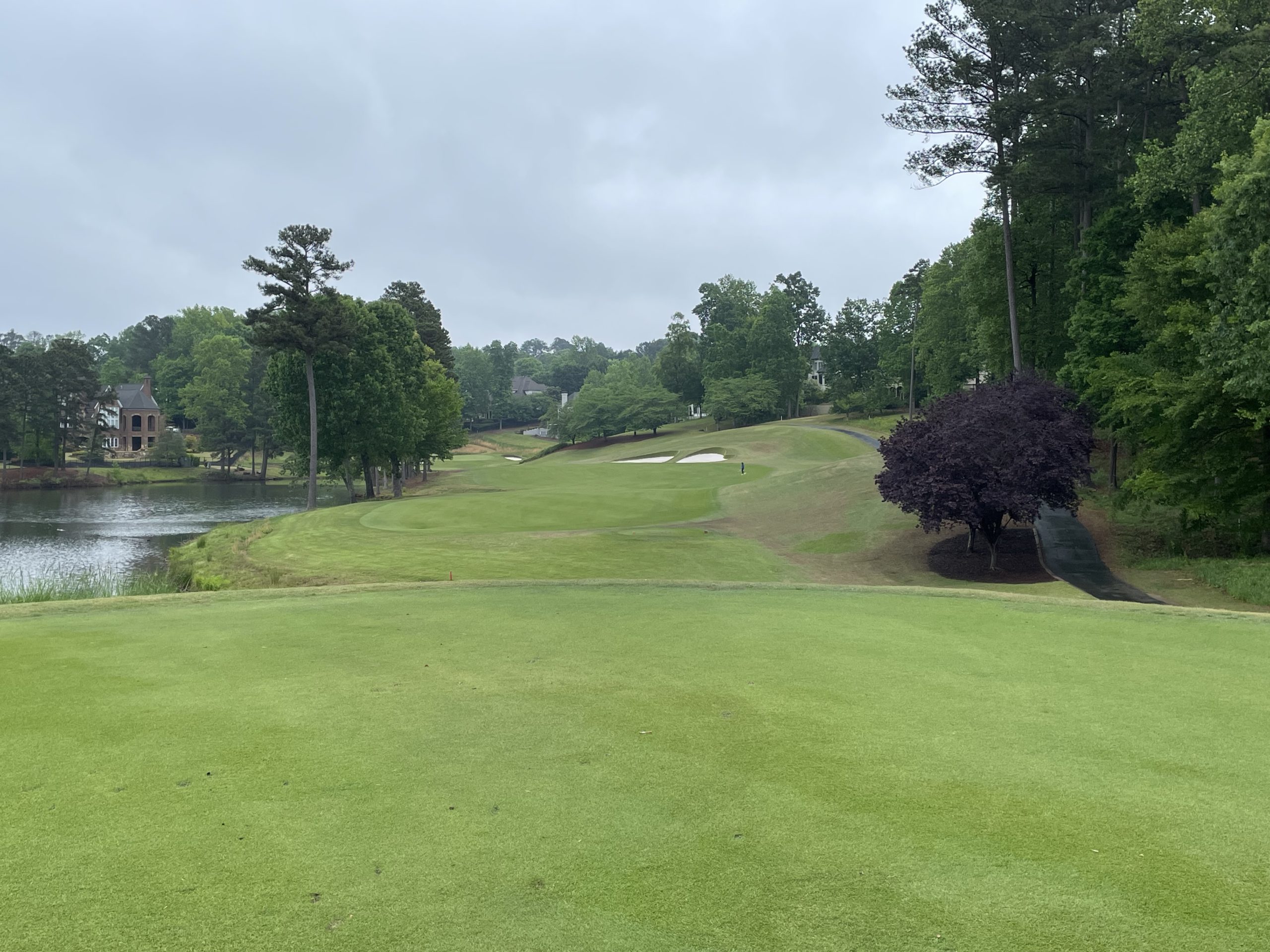
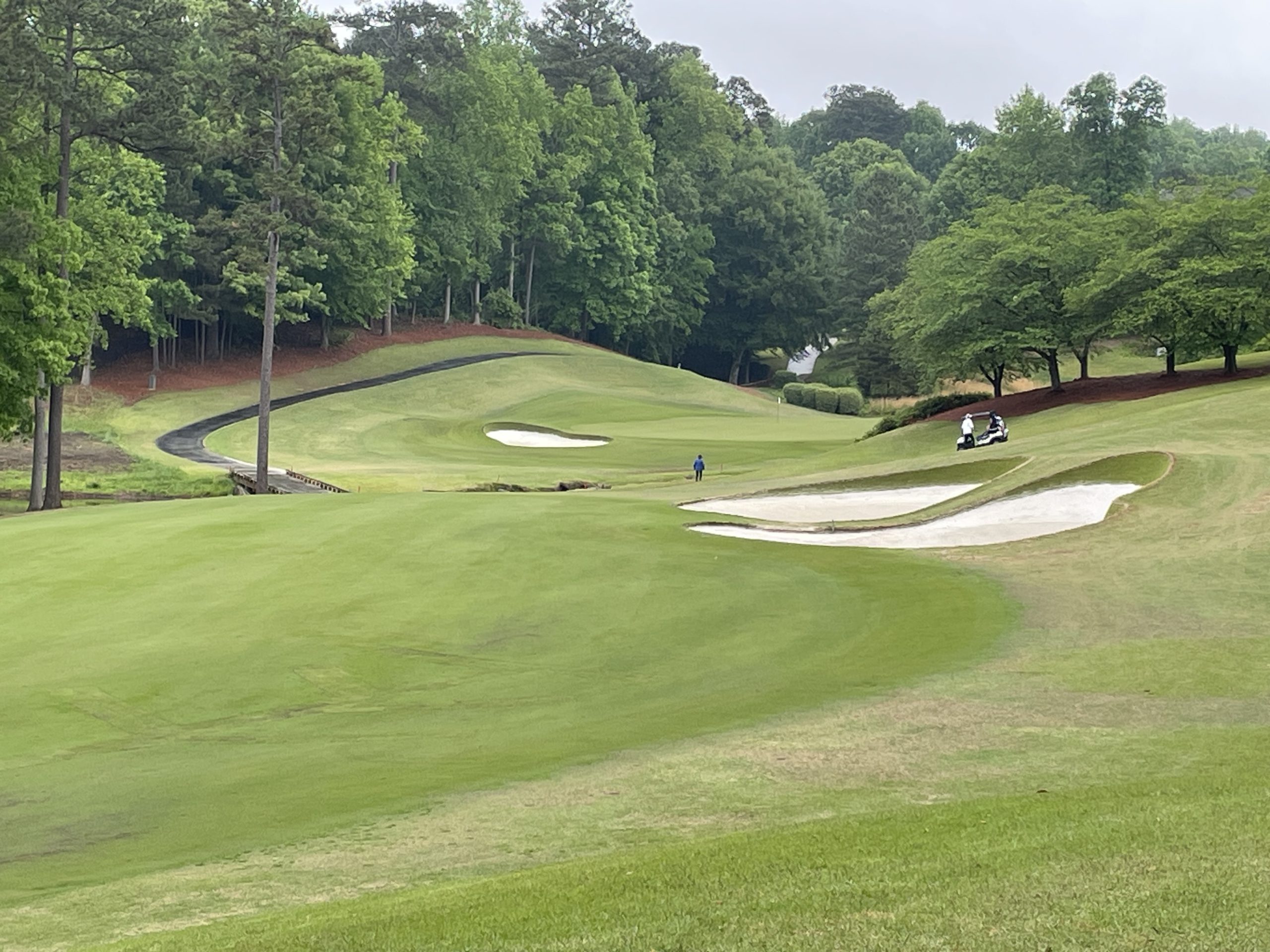
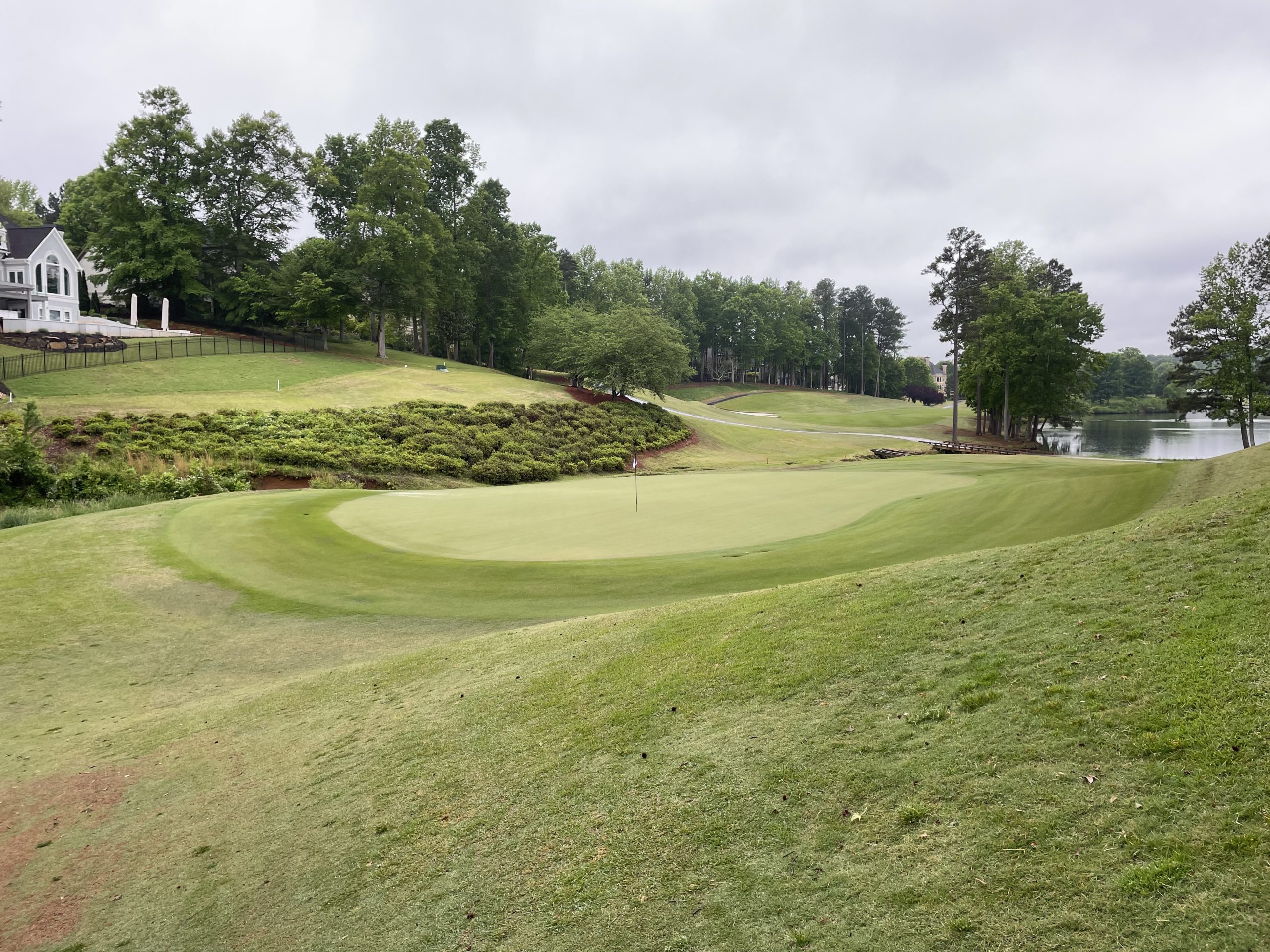
Hole 4 – 297 yards – Par 4
Big hitters are presented with a legitimate birdie opportunity here. The green has a bit of a hill in front of it but drives coming in with right to left curve can bound up onto the green. The putting surface is pretty massive.
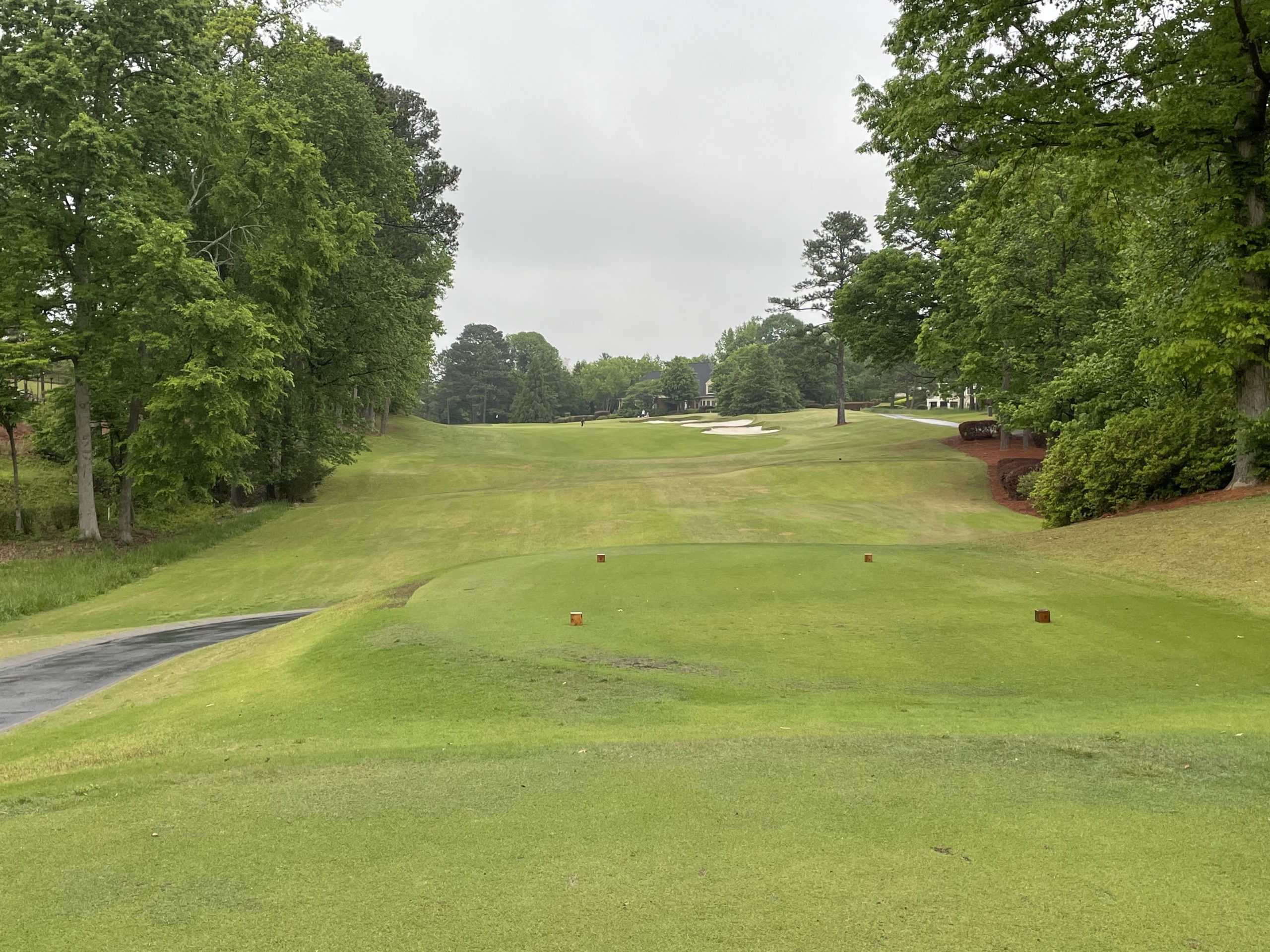
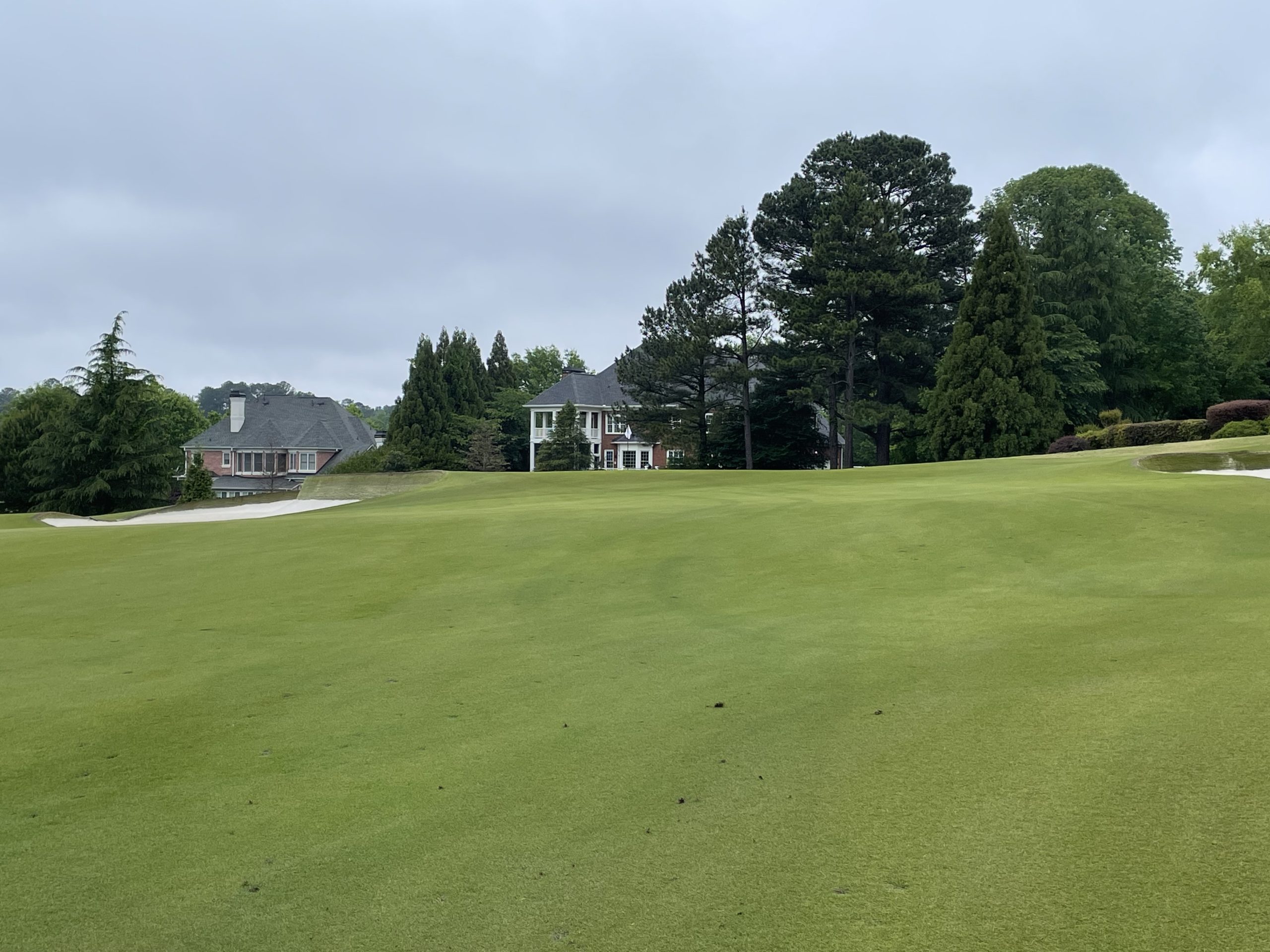
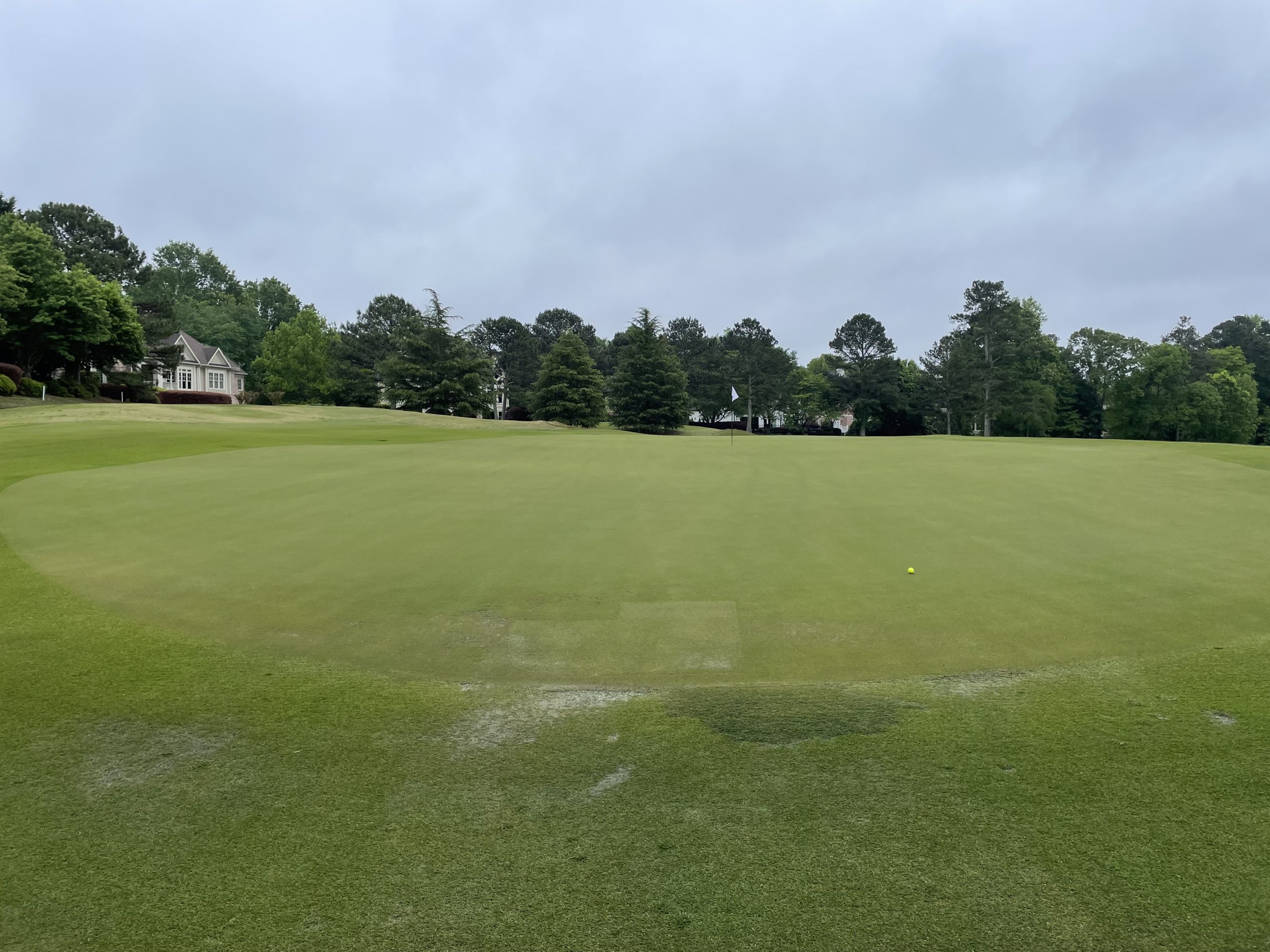
Hole 5 – 441 yards – Par 4
For us shorter hitters, this is a brute of a hole if the fairways aren’t running fast. The hills mean you might not get all the roll you’d like. Off the tee, the only goal is to get it out there as far as you can.
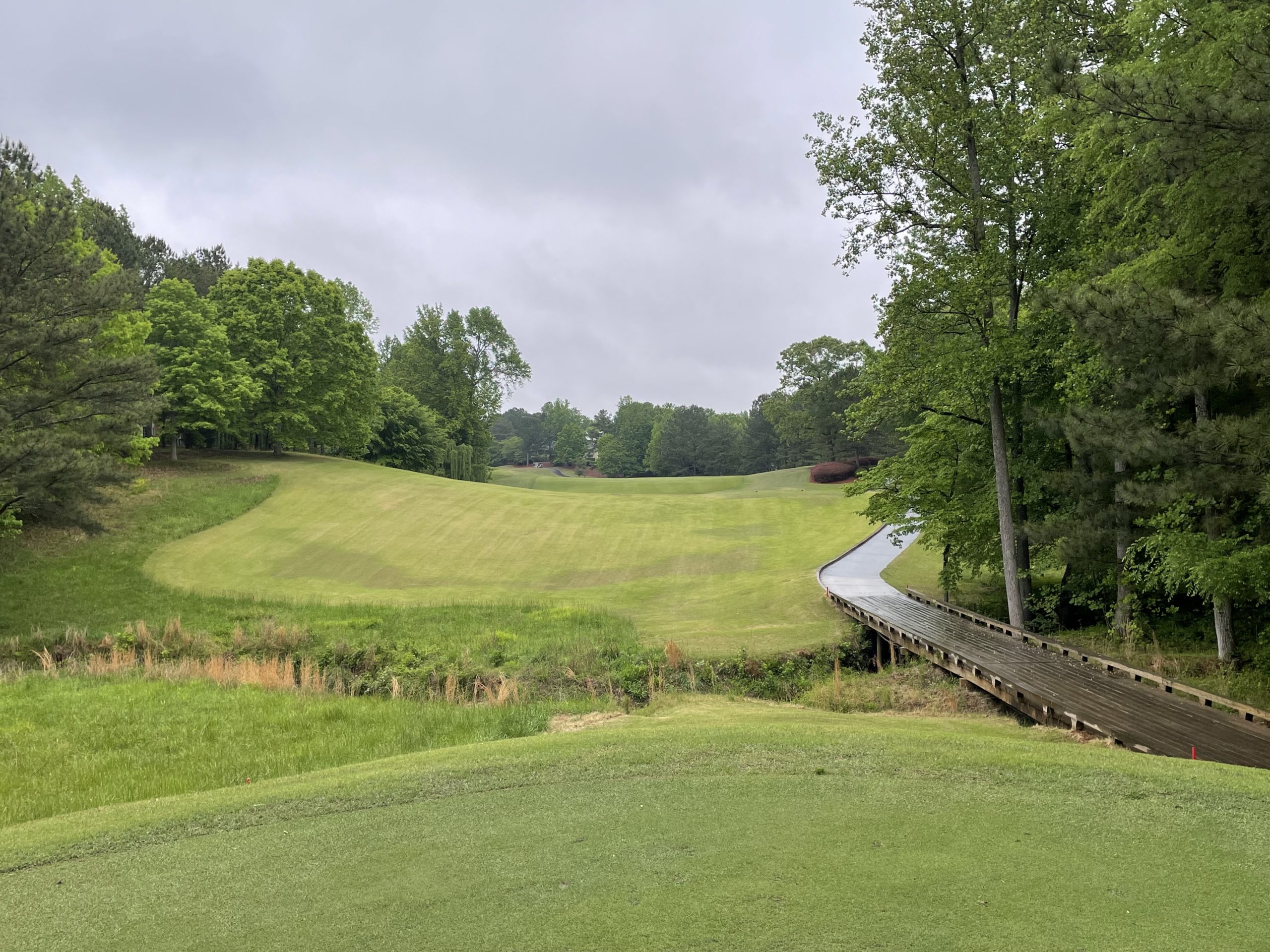
With the upslope in front of the green, running the approach up onto the surface will be tougher. The aerial approach works well here.
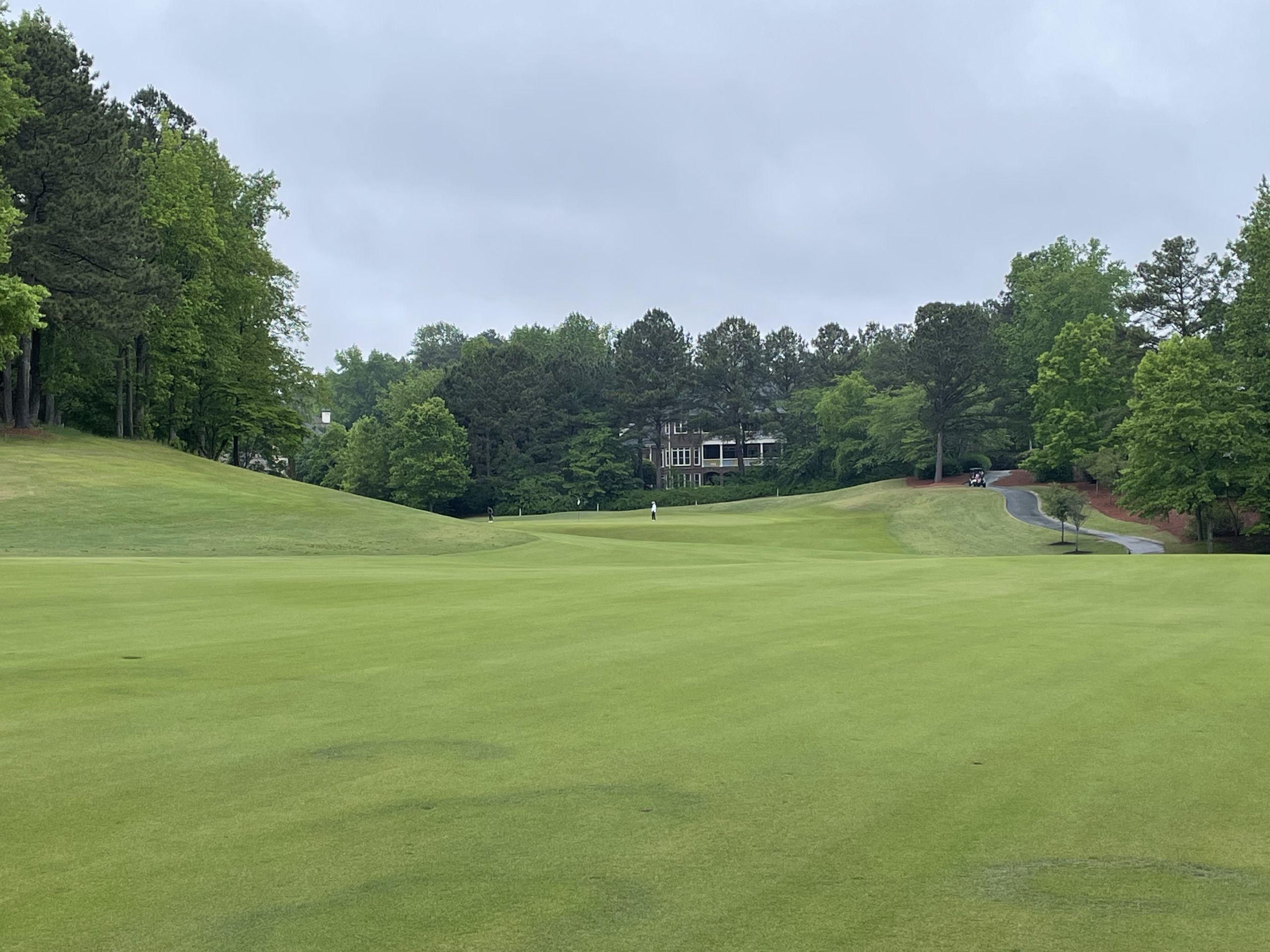
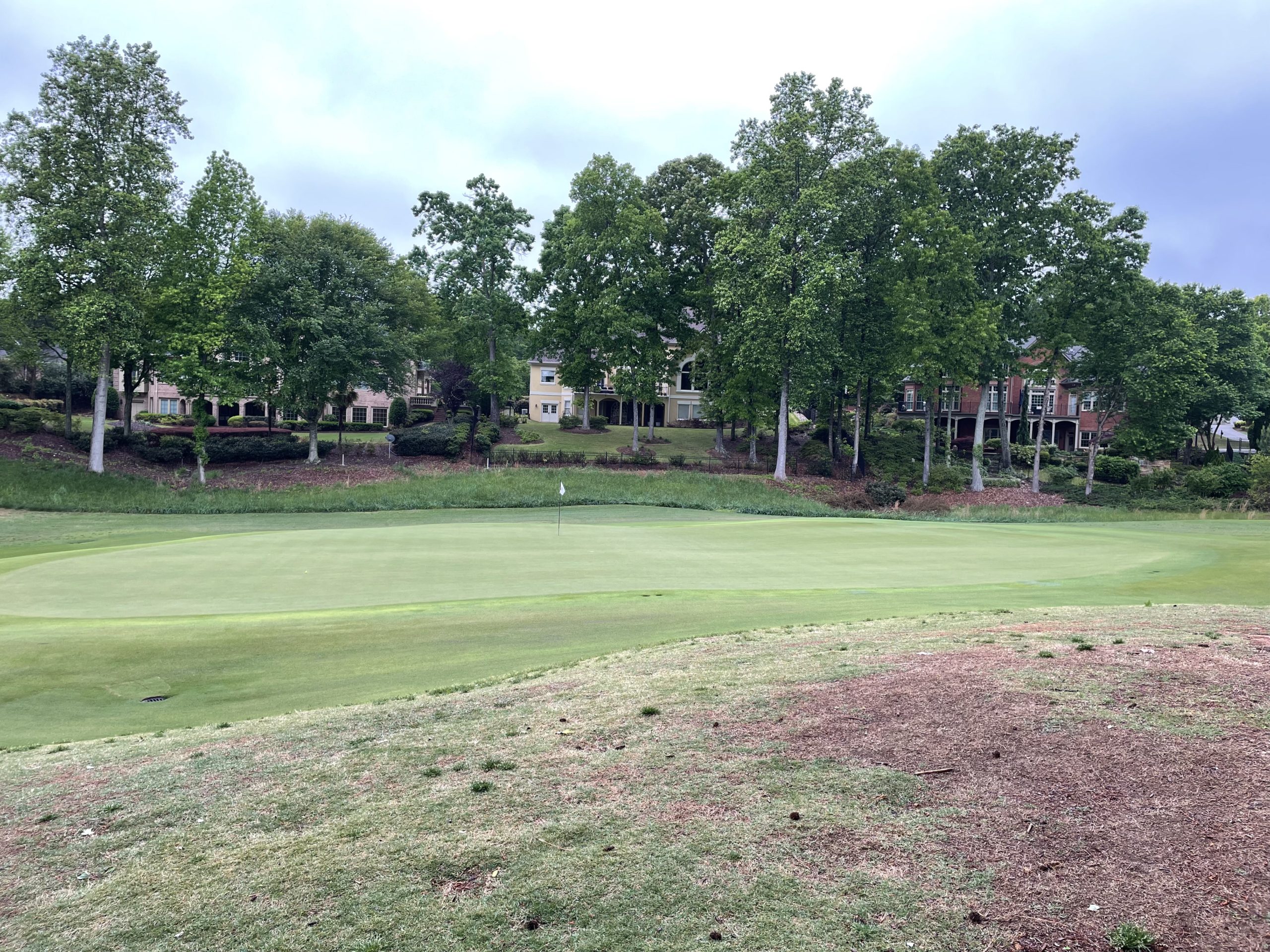
Hole 6 – 386 yards – Par 4
Precision plays over power on this tee shot. Most players will need to fit the drive between the trees. There is some additional room past the pine straw on the left.
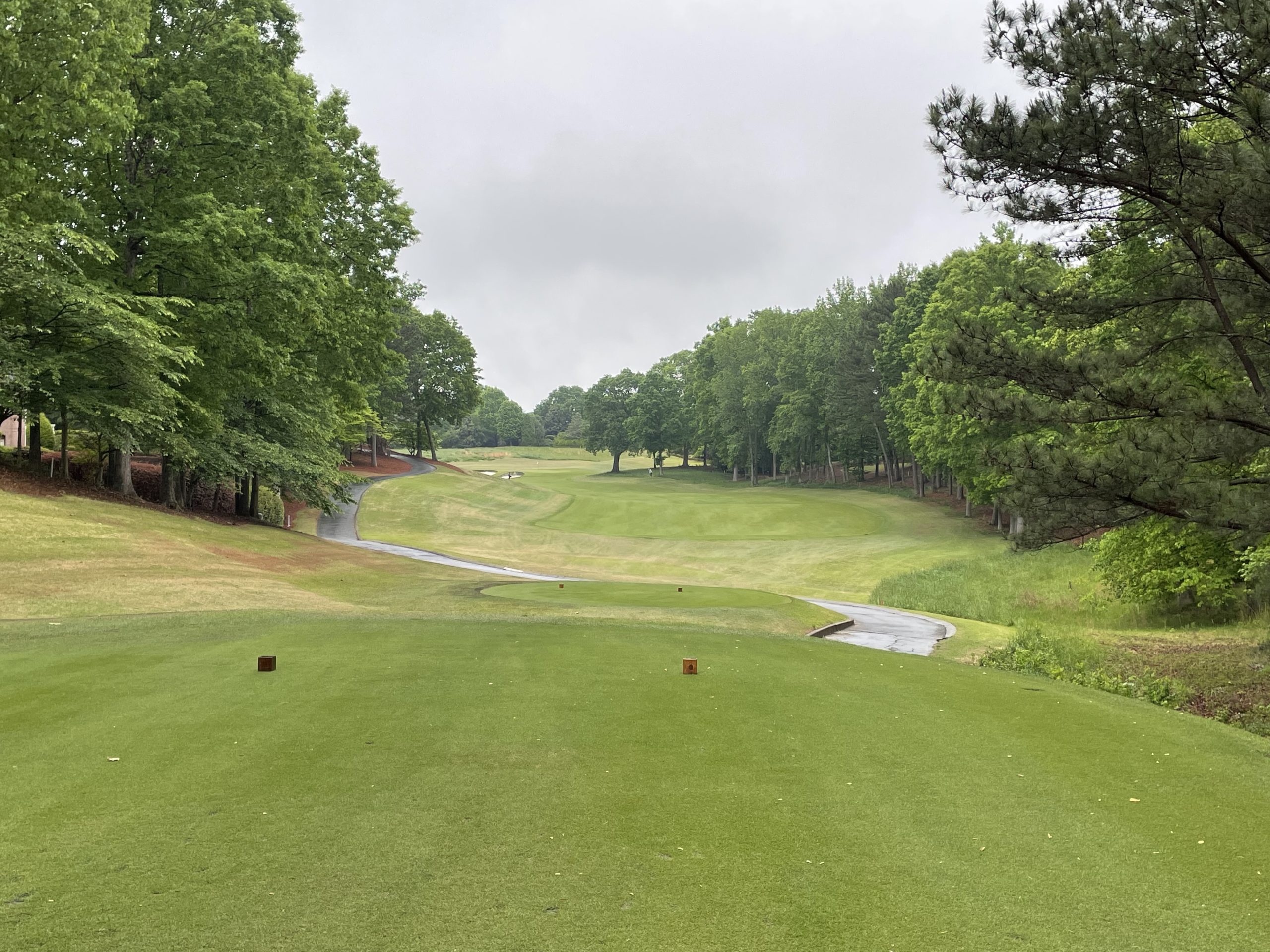
I took the scenic route into the trees but was provided with a bit of a window.
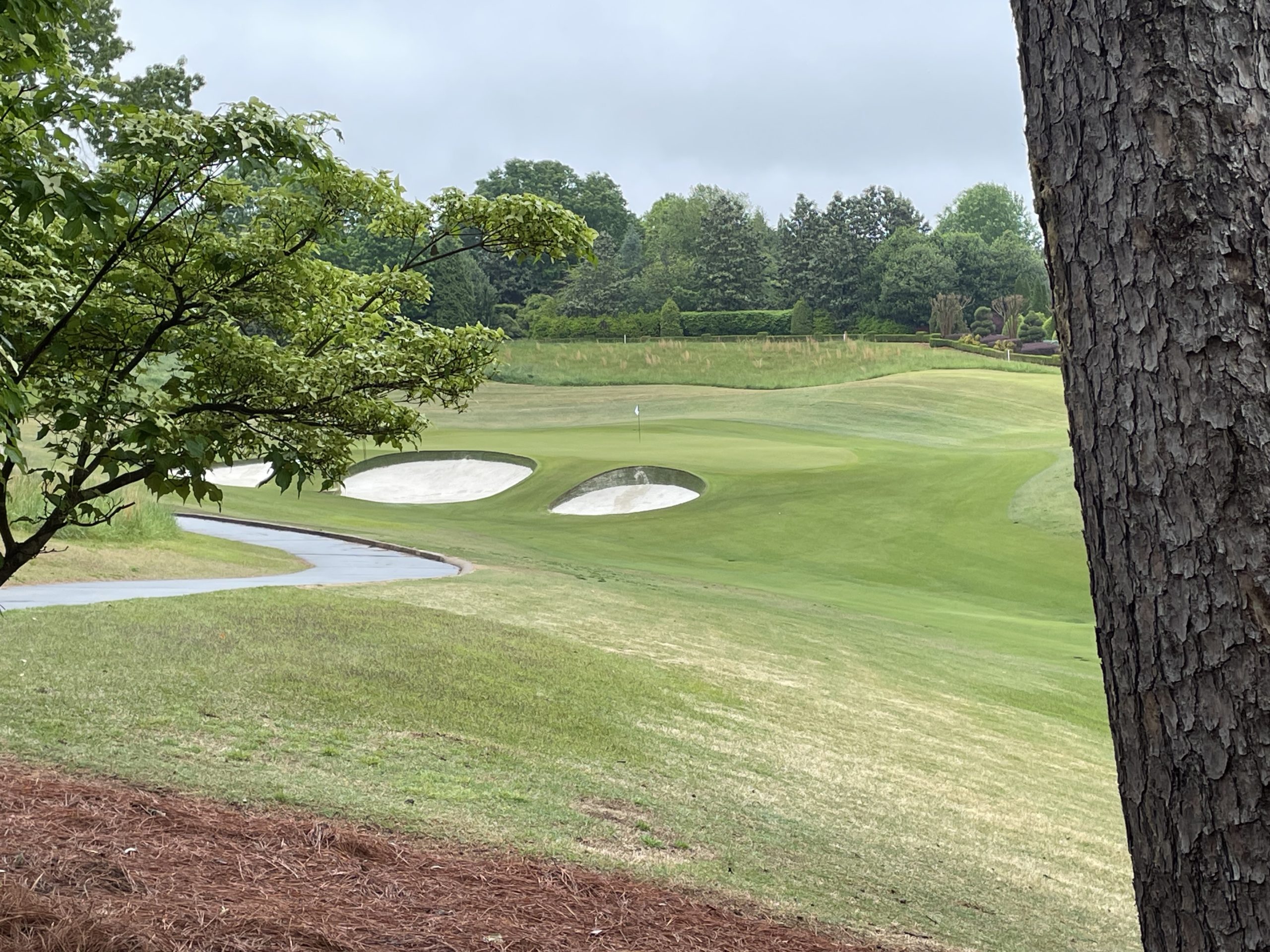
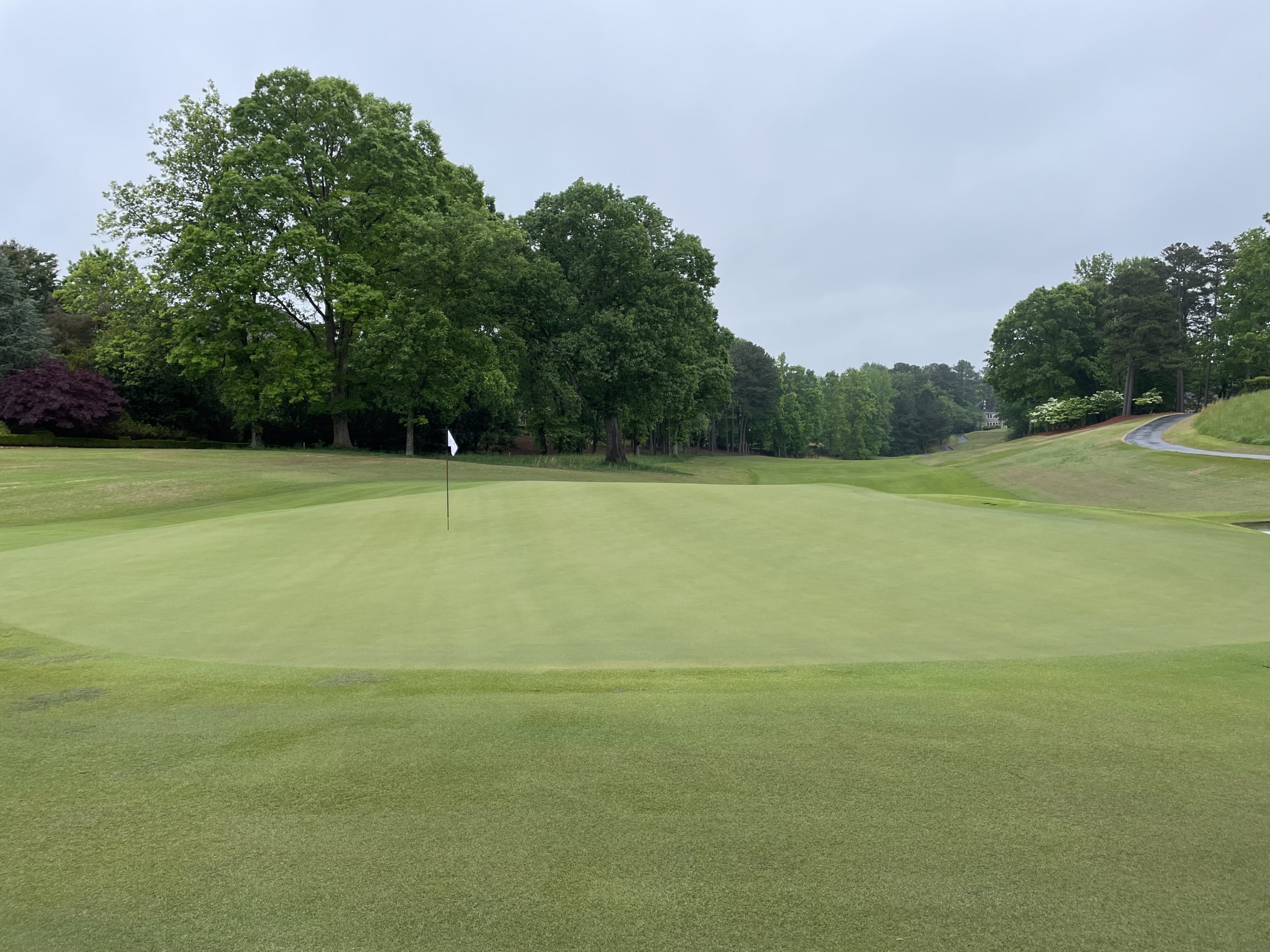
Hole 7 – 168 yards – Par 3
The challenge on this hole is the very shallow green site. For your tee shot, that means a tight rope between the front bunkers and the back of the green. Adding to the fun, there is a run off on the left side that will funnel your ball away from the green.
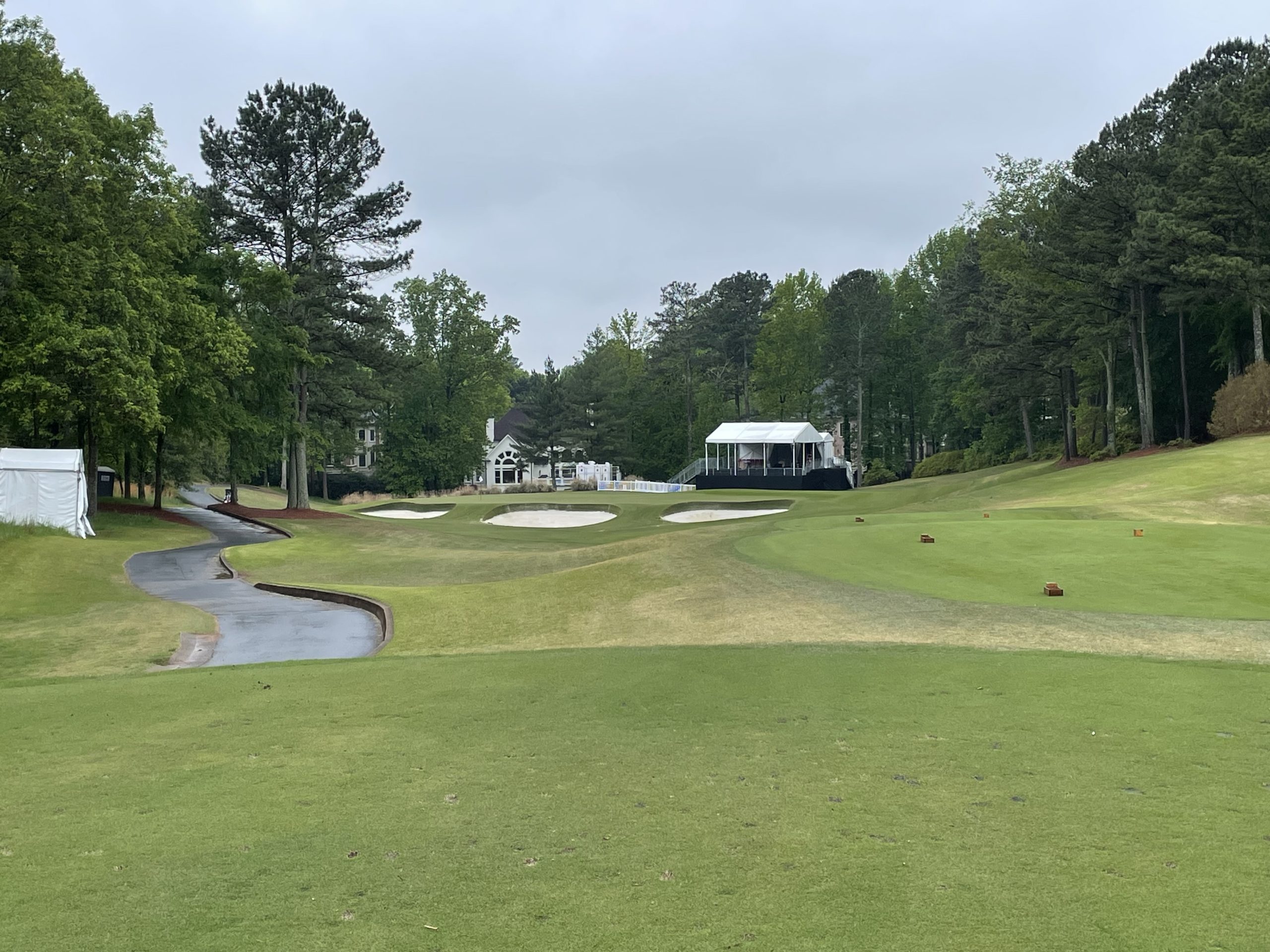
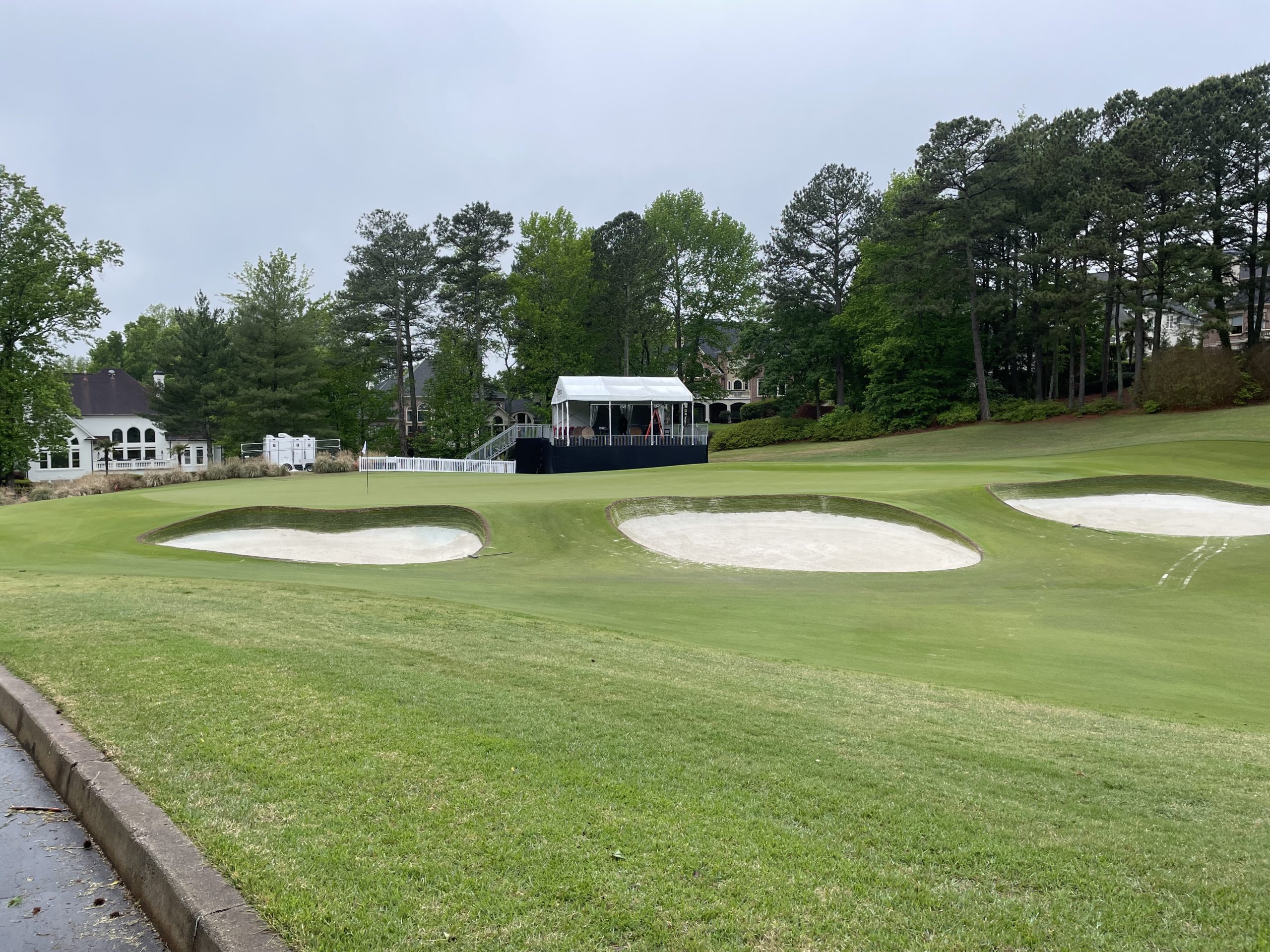
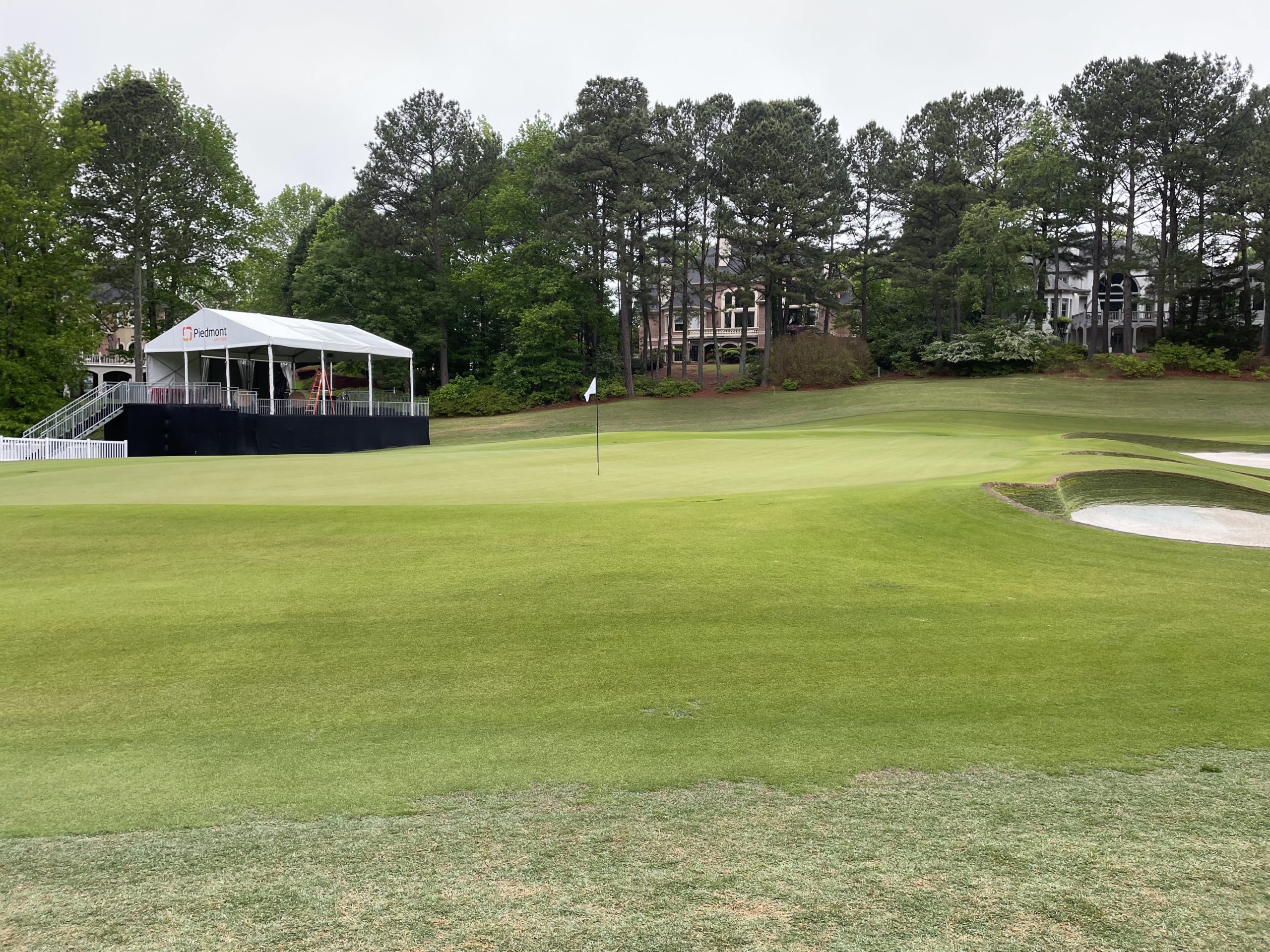
Hole 8 – 435 yards – Par 4
If you can push your tee shot over the hill, the result is additional roll since the fairway drops down towards the green. The aggressive line is over the bunkers on the right, but if you can play a fade, I’m not sure that strategy is worth it.
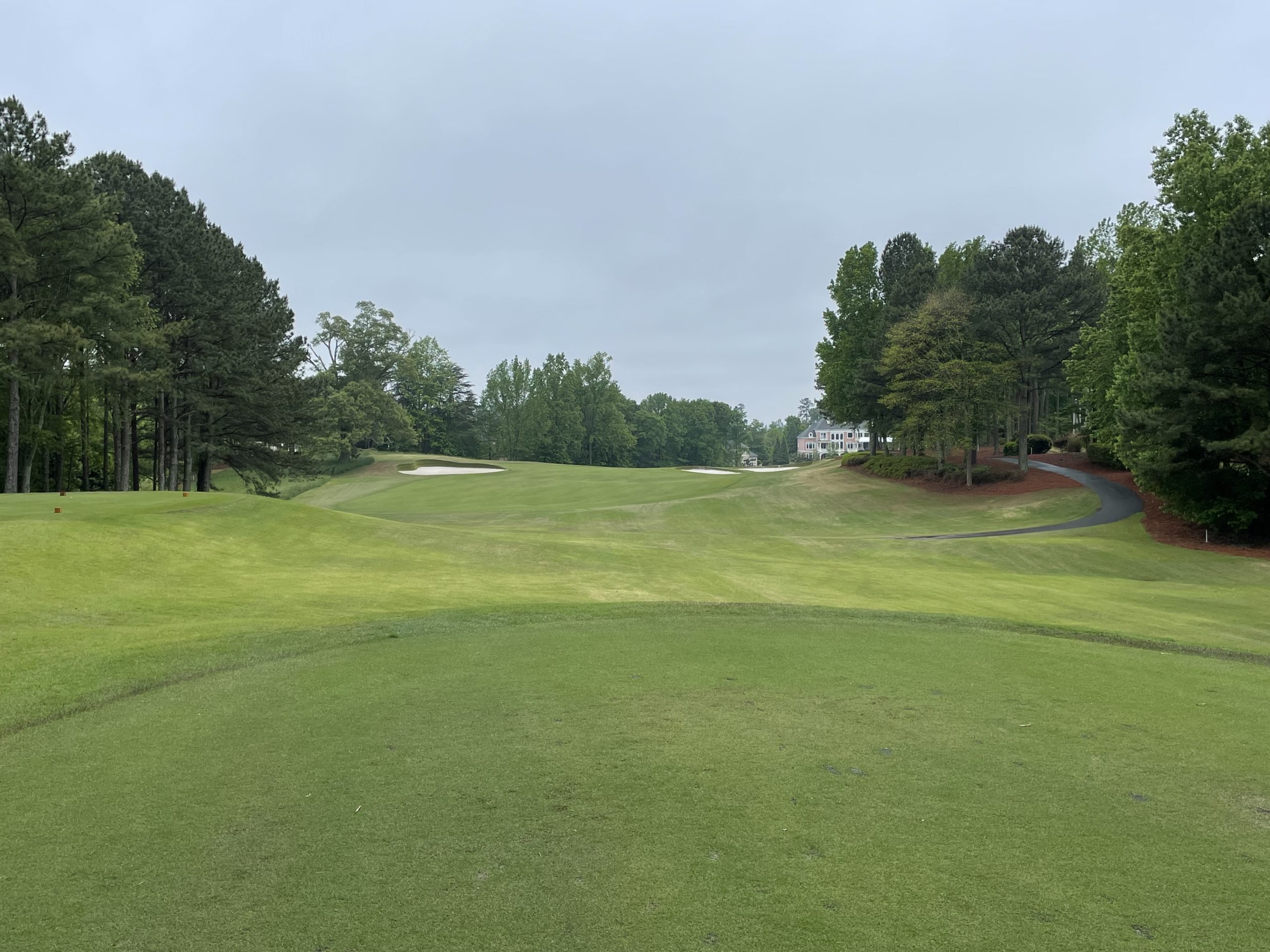
You absolutely cannot miss left with the approach shot because that dropoff is severe. Anything center or right on the green is quite good.
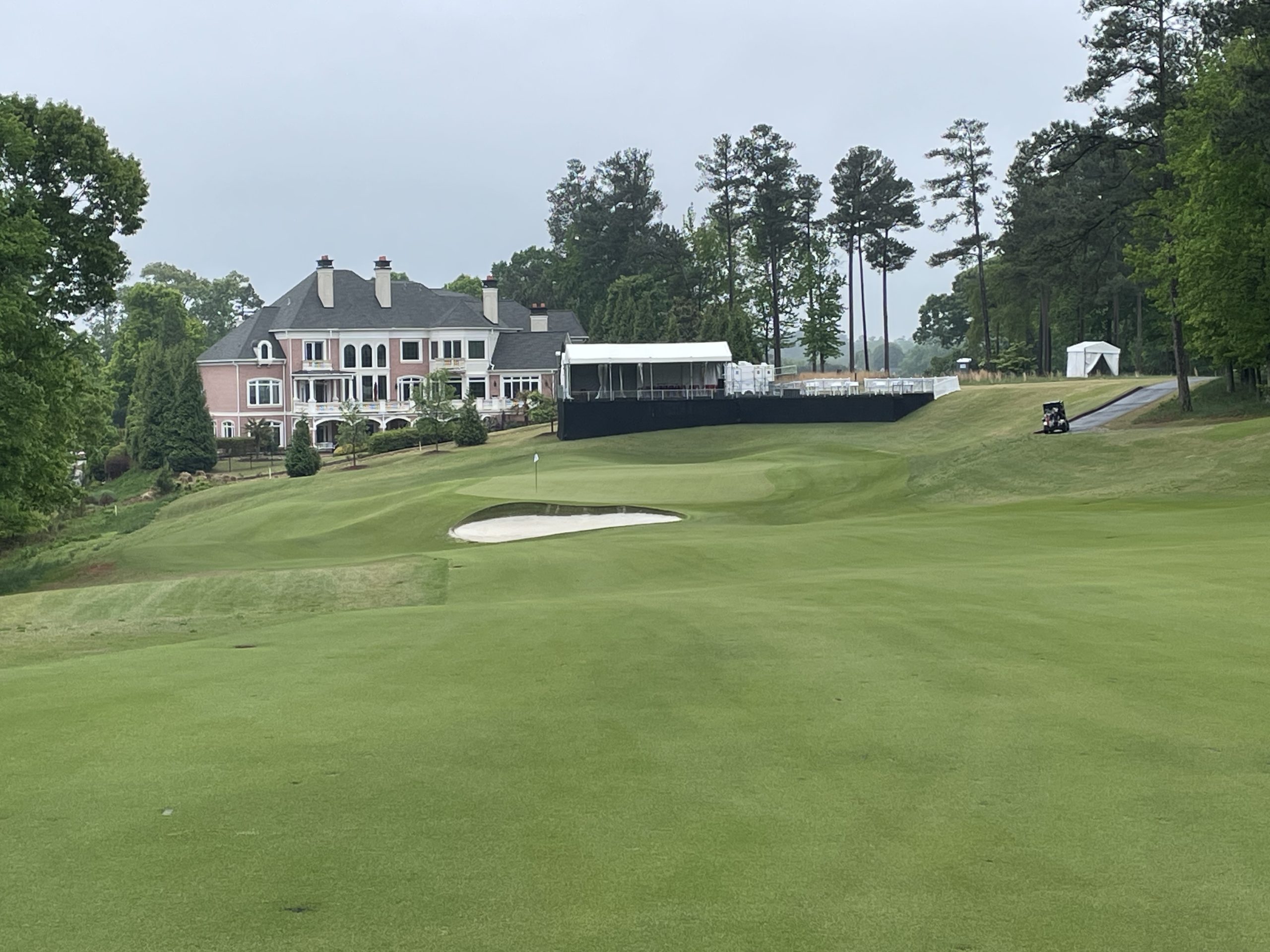
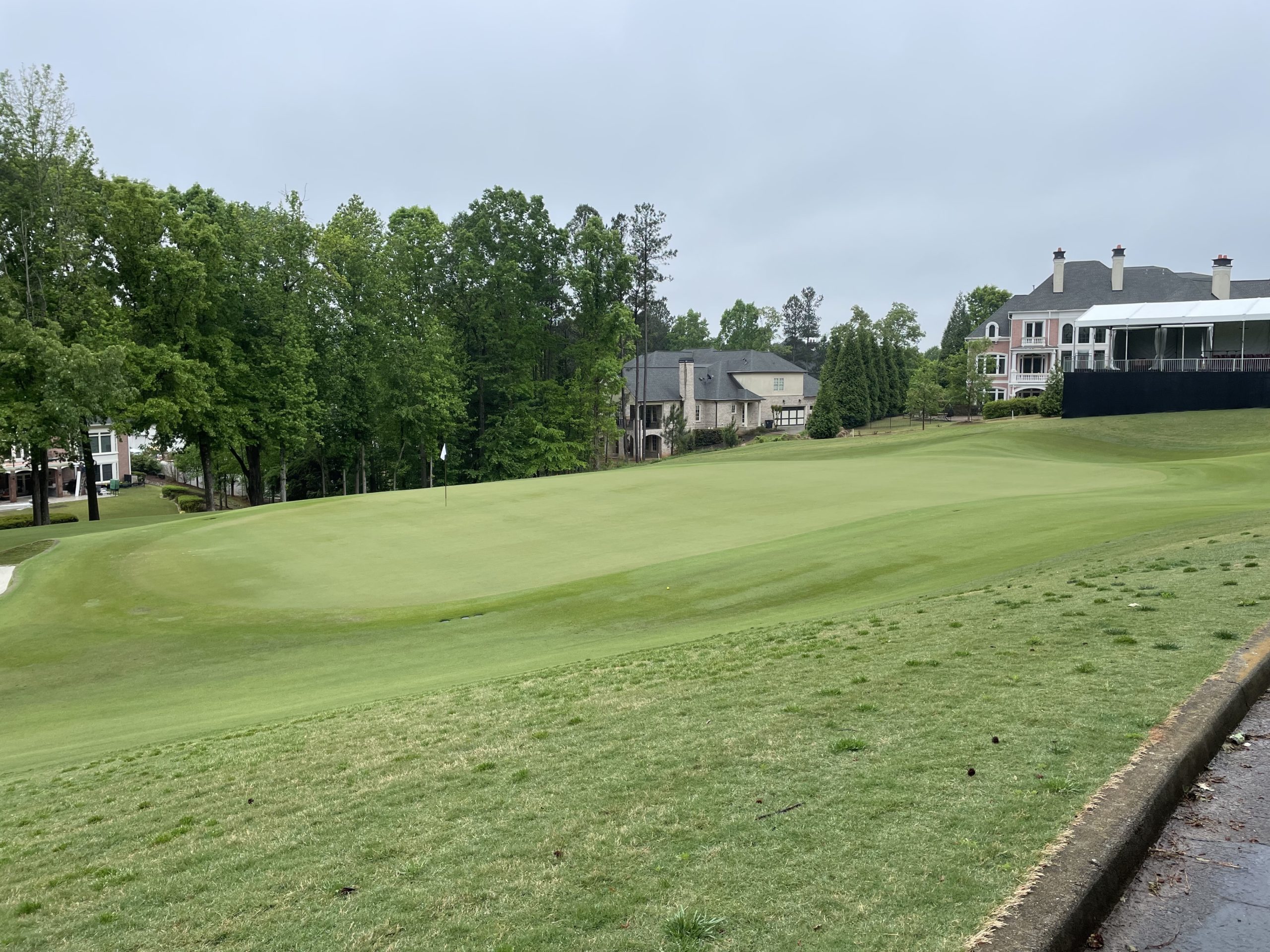
Hole 9 – 561 yards – Par 5
This is the signature hole of the entire property and you’ll see why in a minute. From the tee, you need to keep it up the left side because trees and tall grass loom on the right.
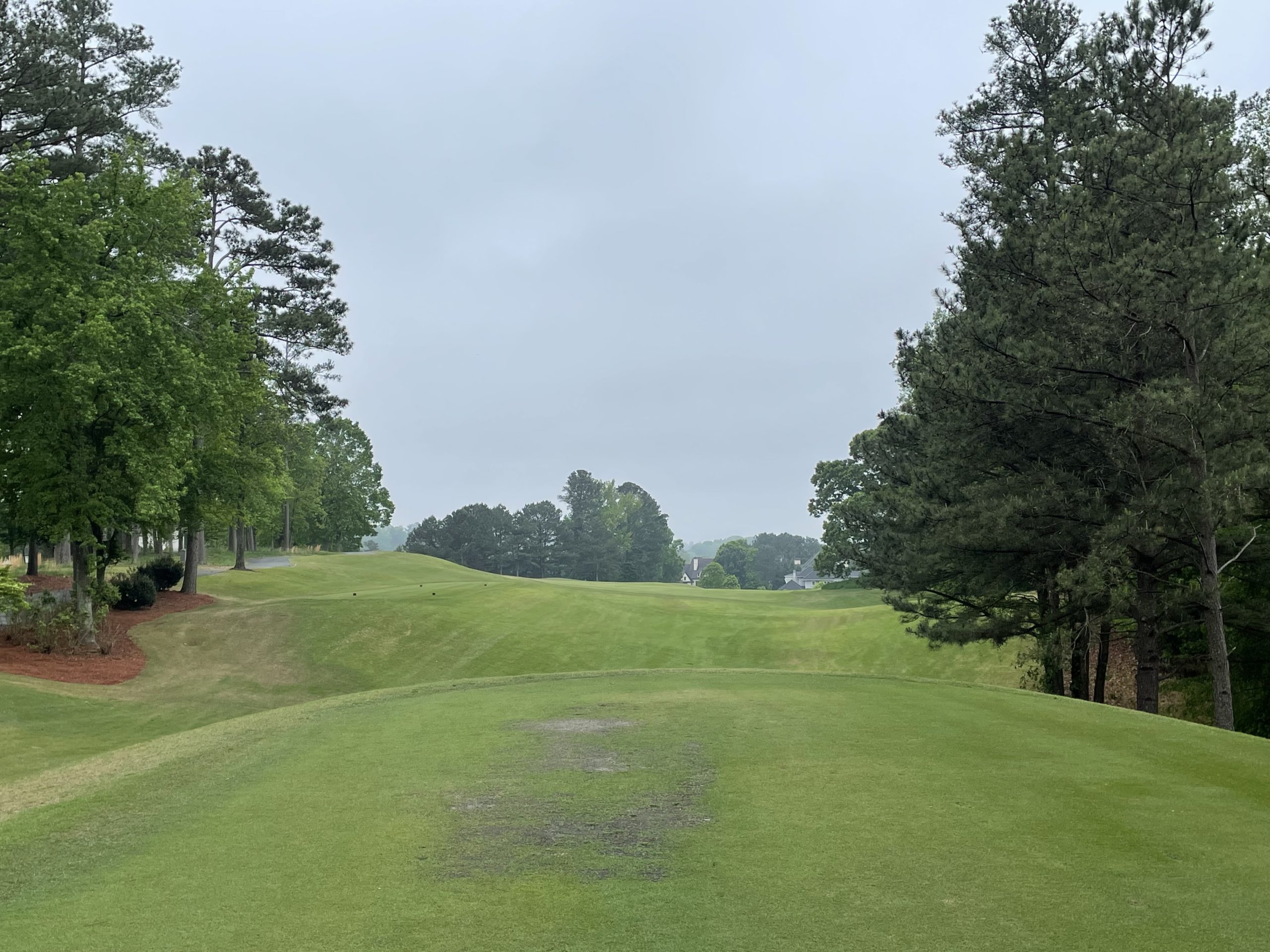
Once you reach this point in the fairway, you can see why this is the signature hole. The beautiful scene reveals itself but you also have some shots to think about. If you can reach the green, you might as well send it. The layup must fit into the sliver of fairway guarded by water on the left.
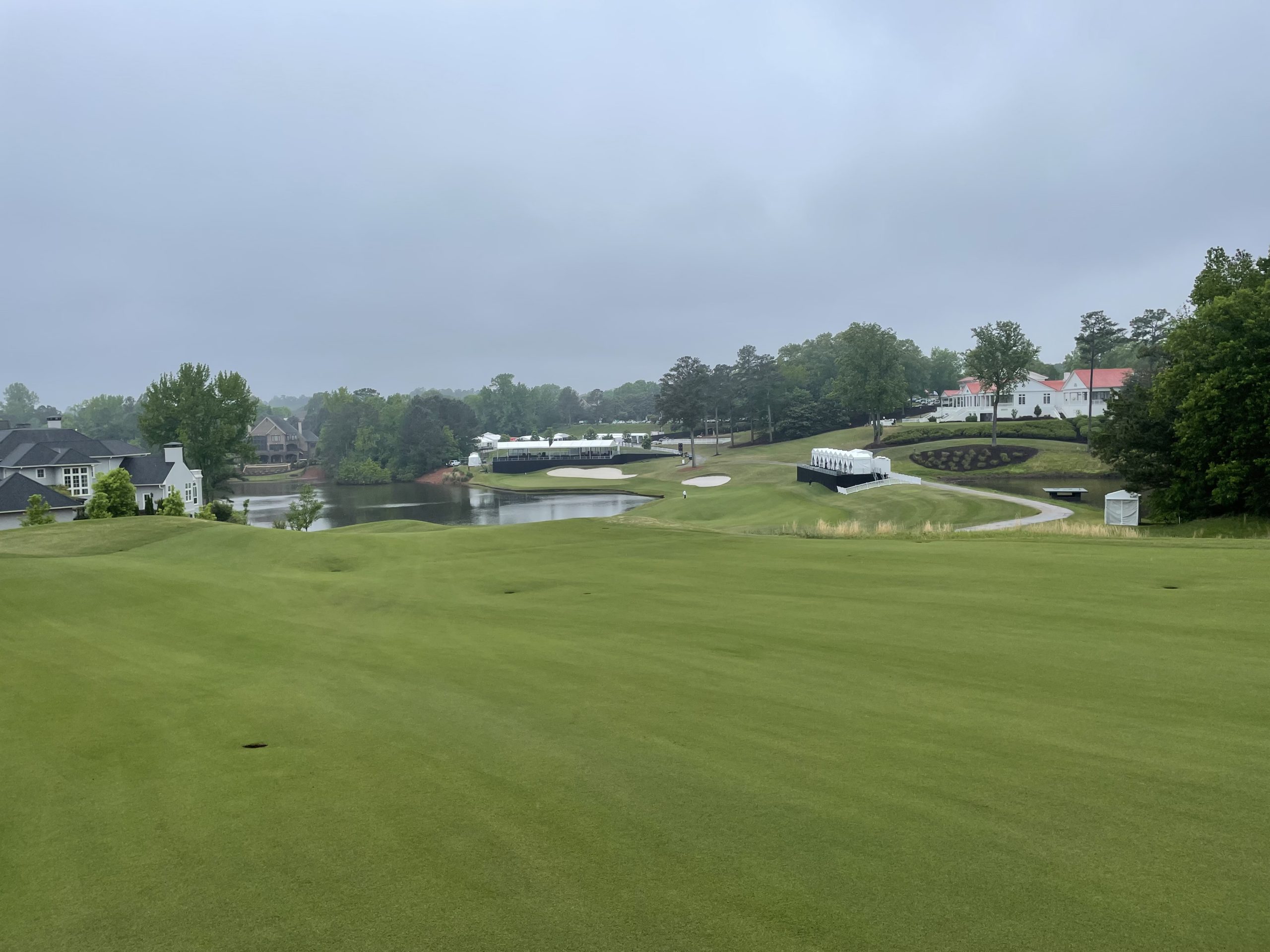
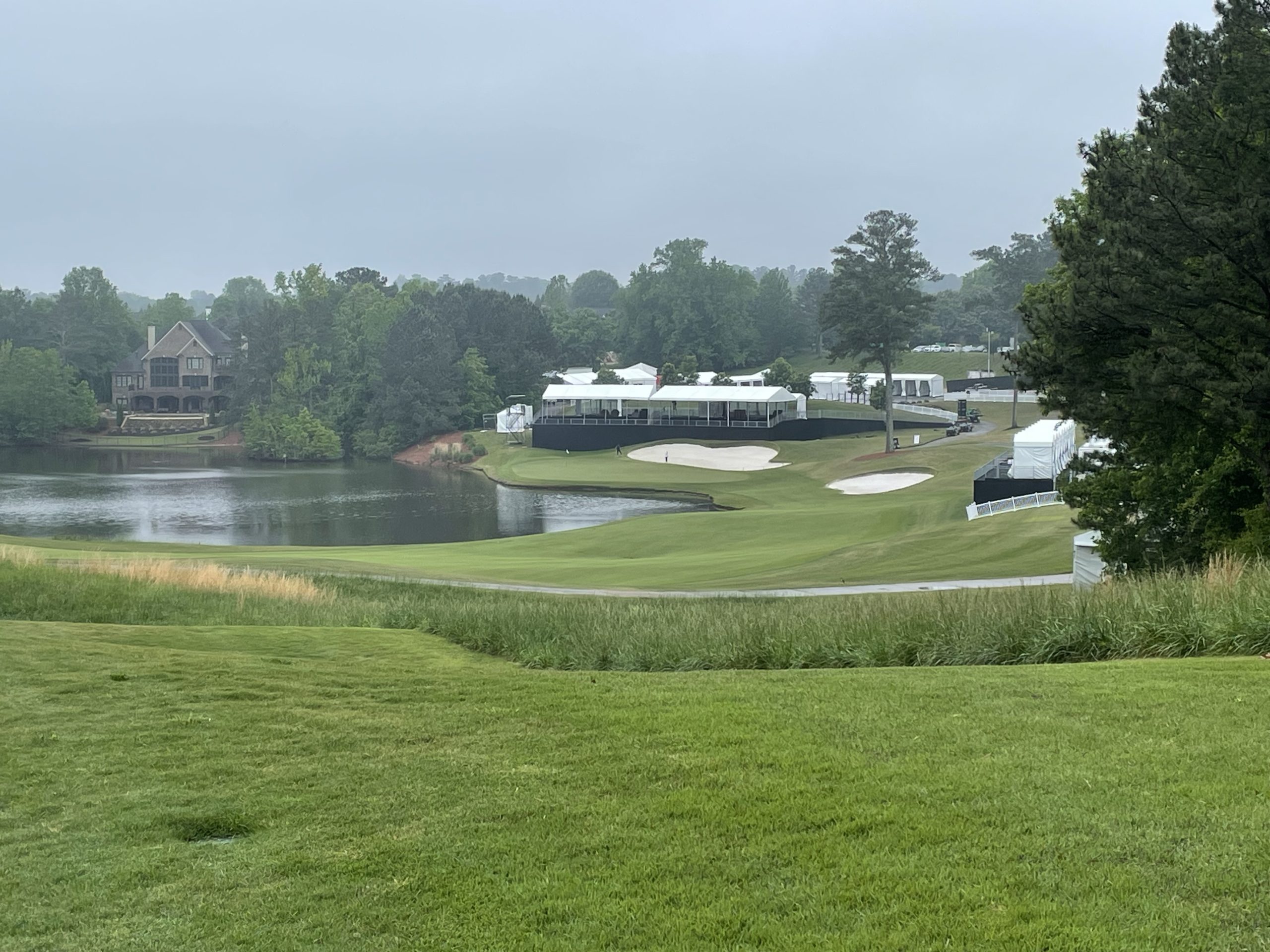
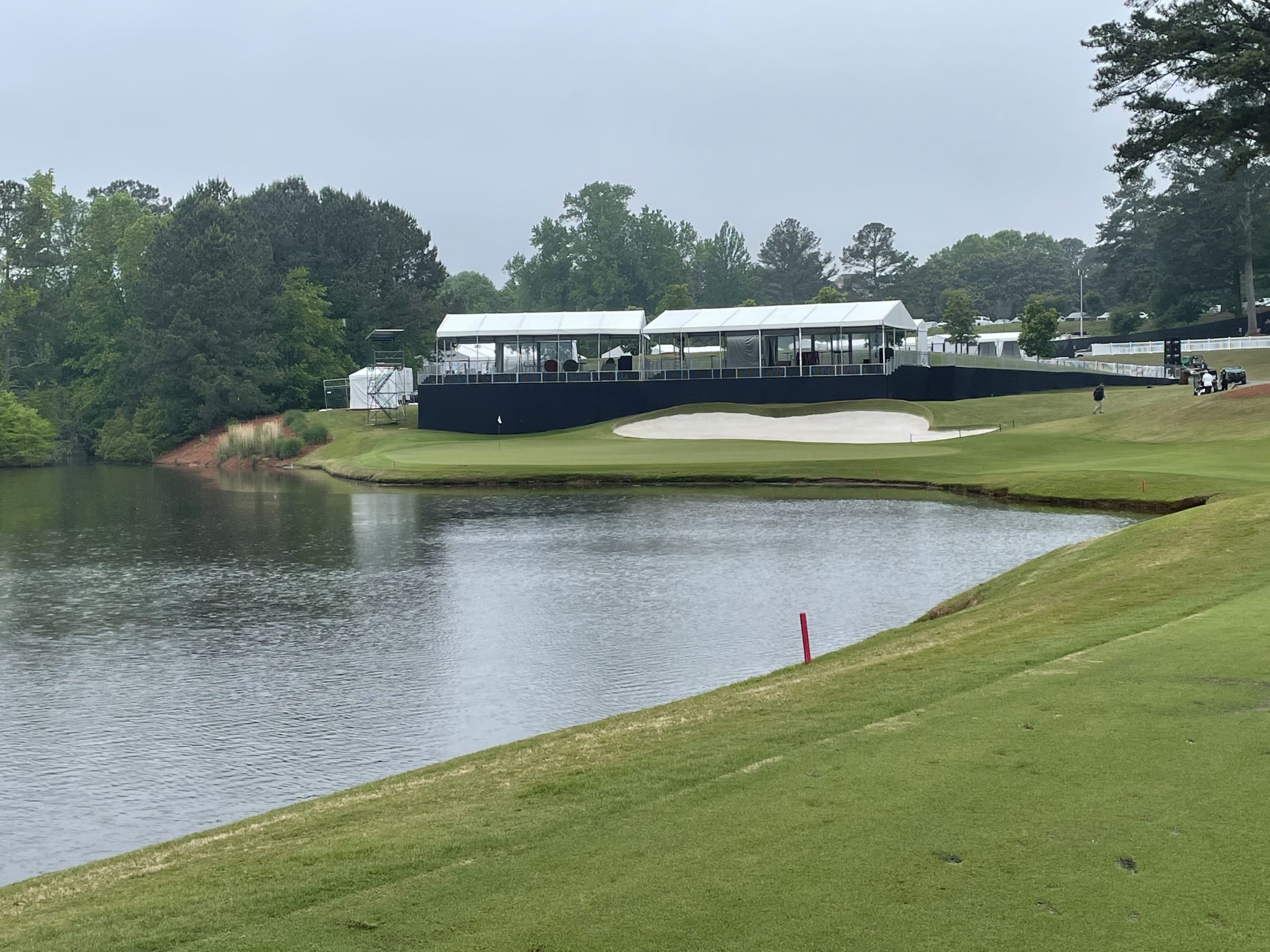
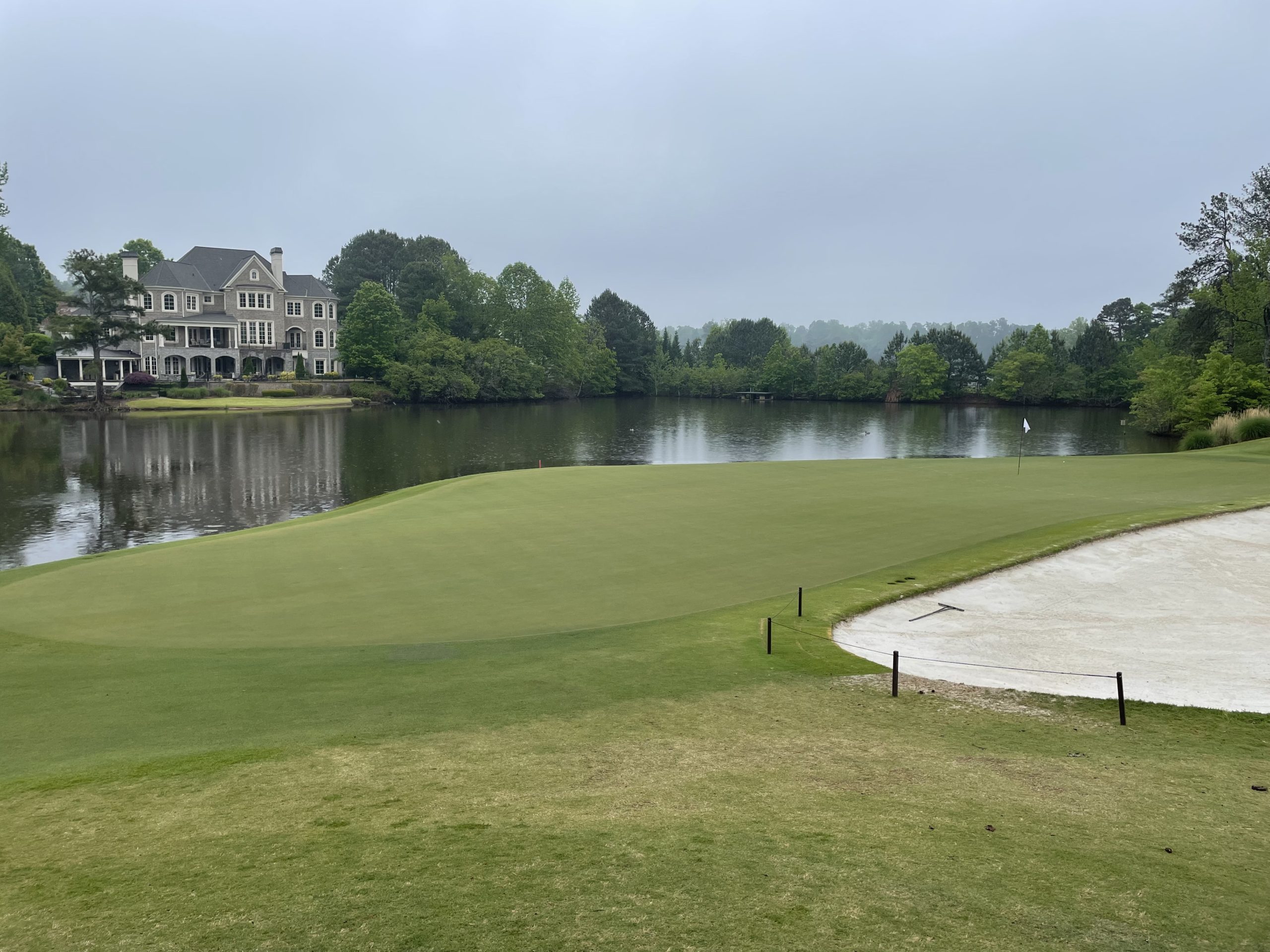
Looking back up the hole illustrates the elevation change and the proximity of the green to the water.
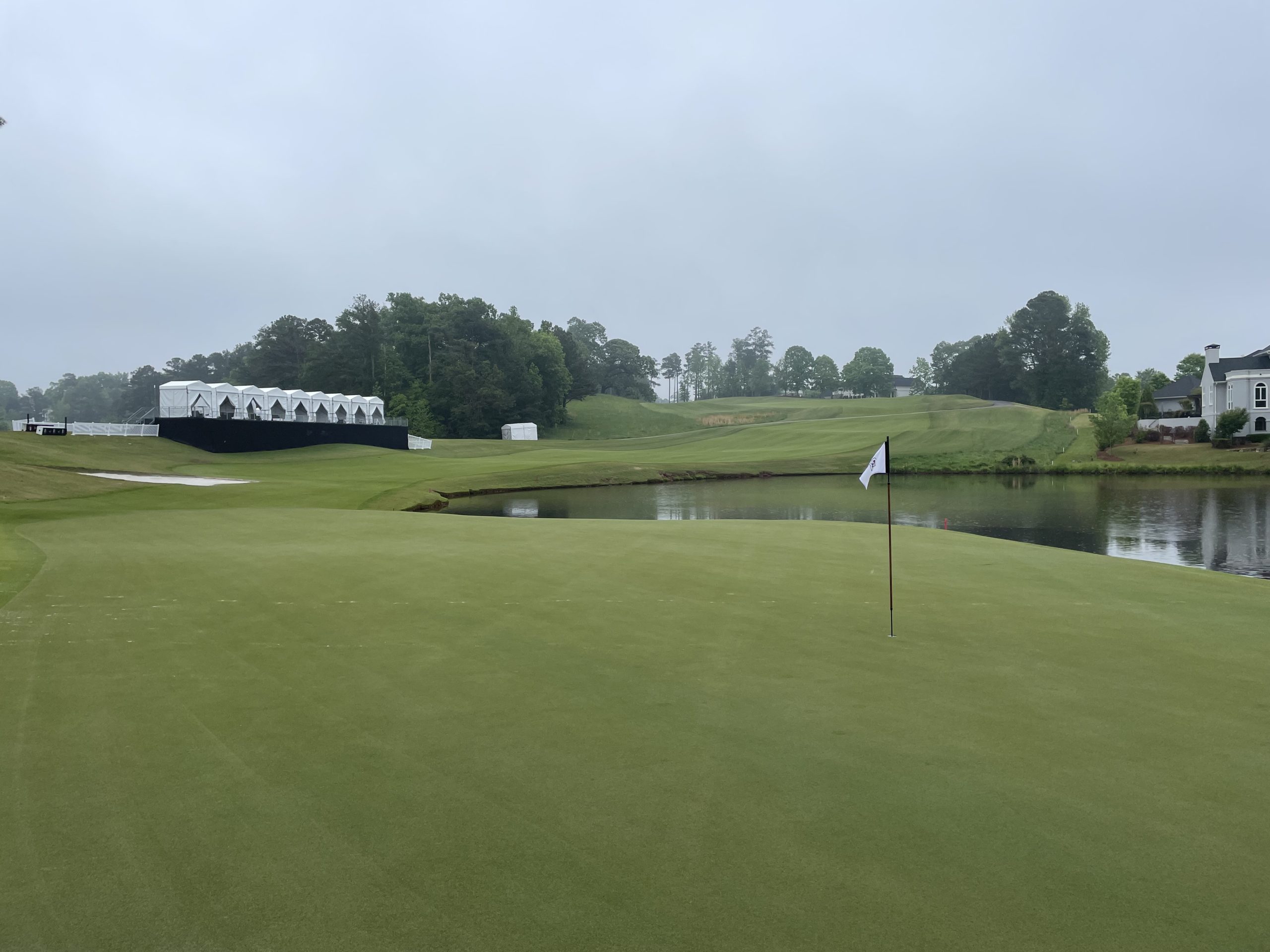
Hole 10 – 404 yards – Par 4
Were onto the Stables nine with this straightaway hole. The fairway rises slightly before tumbling down to a green surrounded by short grass and fronted by a bunker.
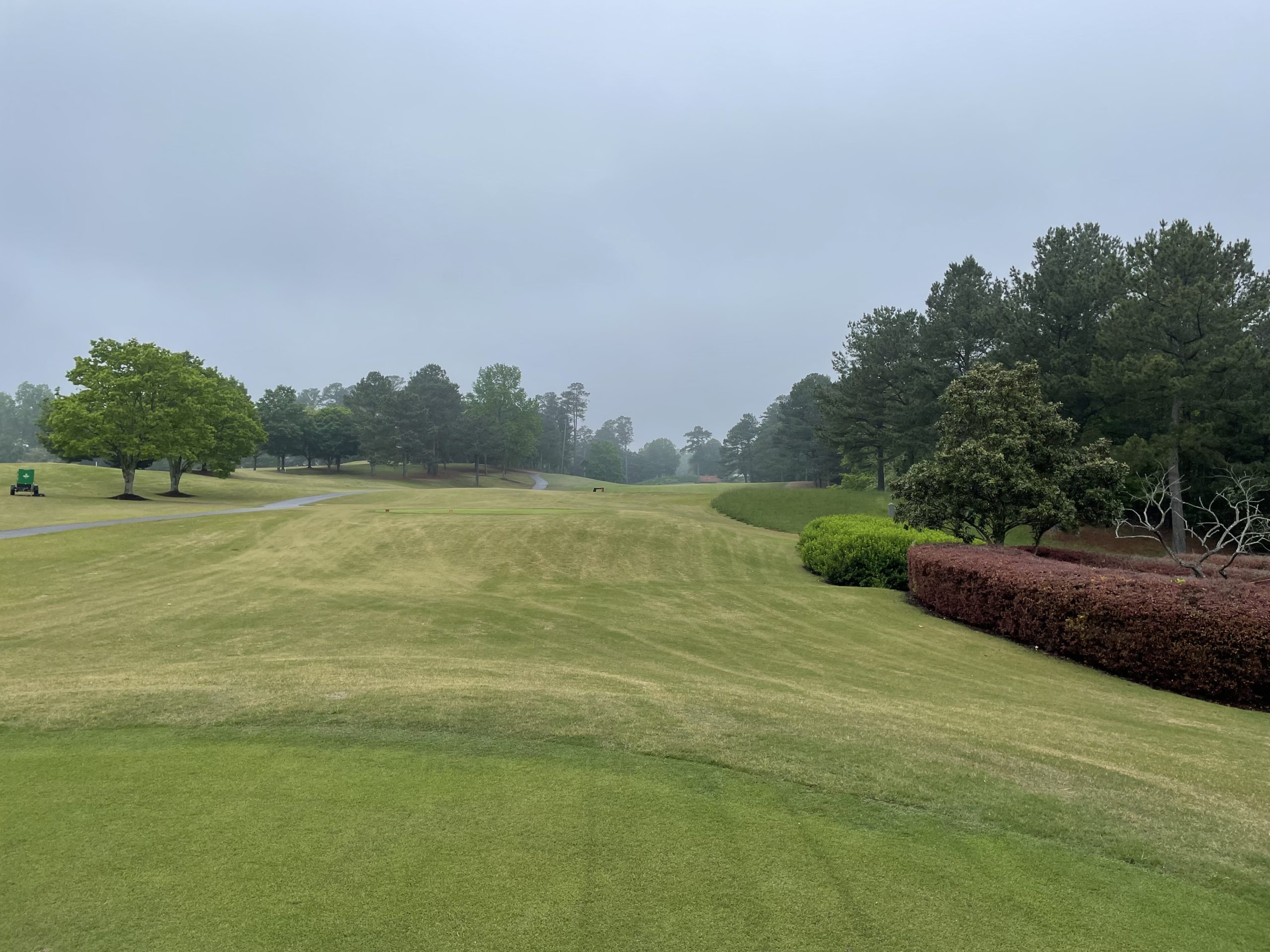
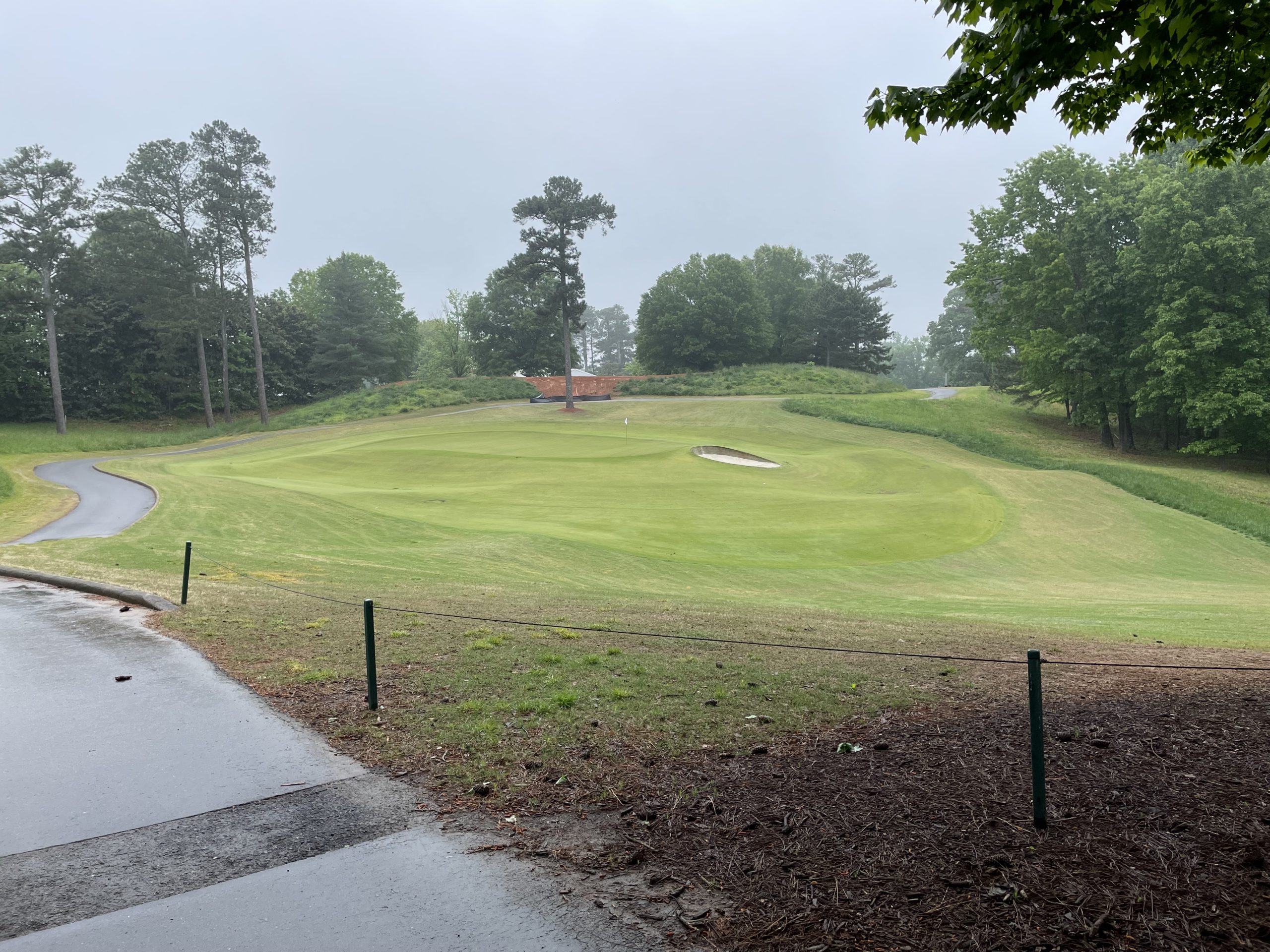
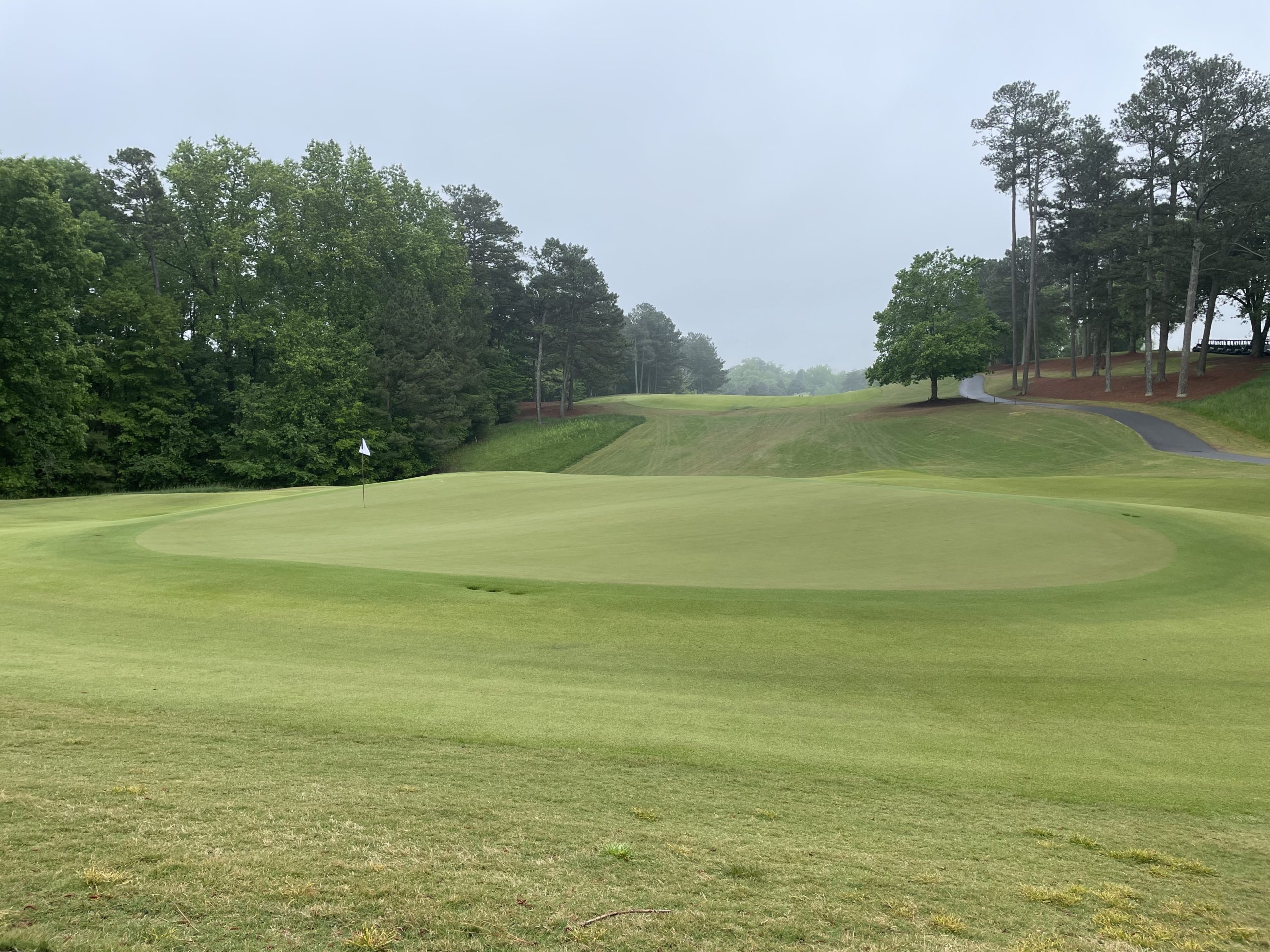
Hole 11 – 143 yards – Par 3
The riveted face bunkers are a staple around TPC Sugarloaf and this hole is teeming with them. Front pins are the toughest here since any mishit will likely find the sand.
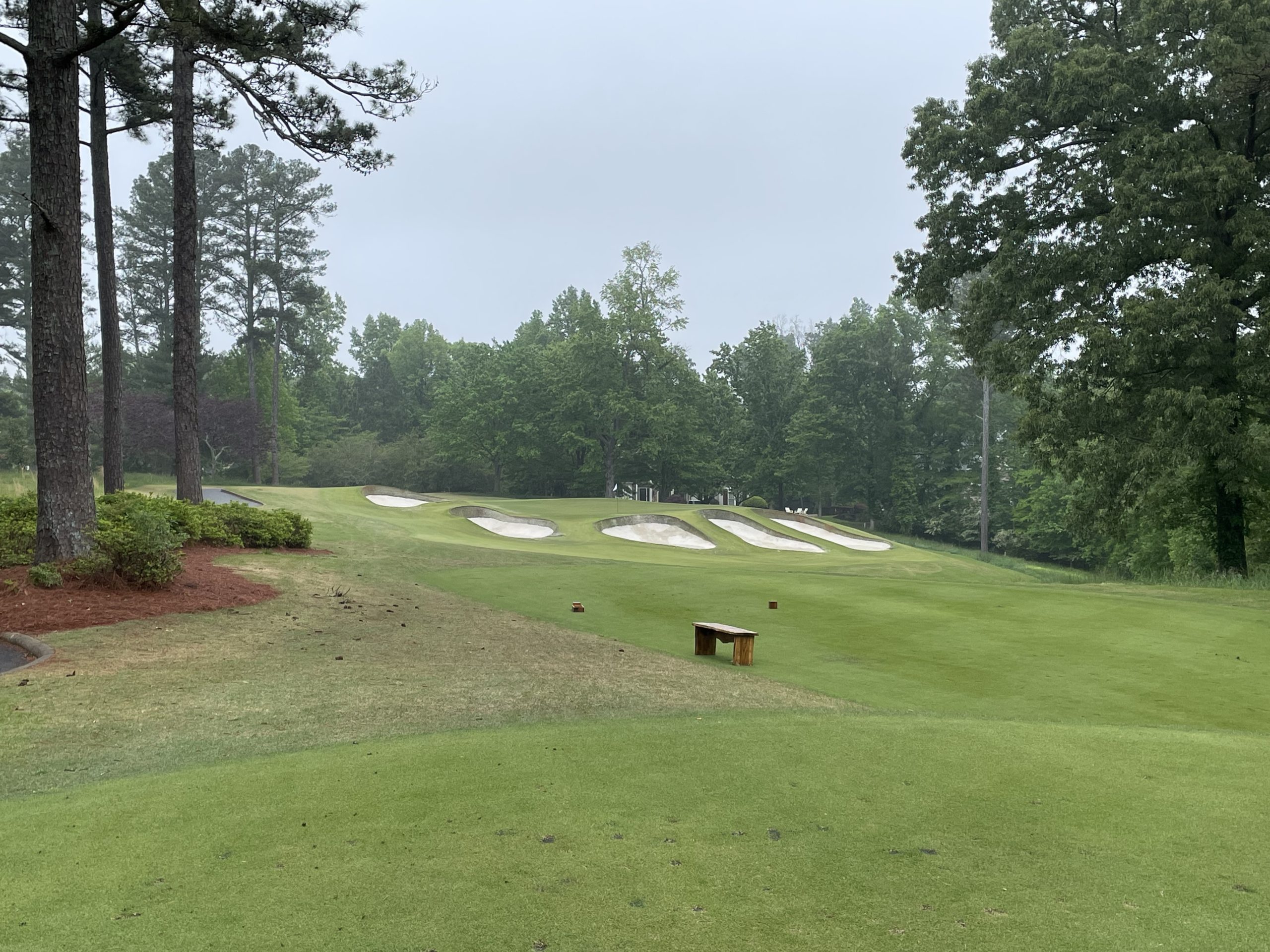
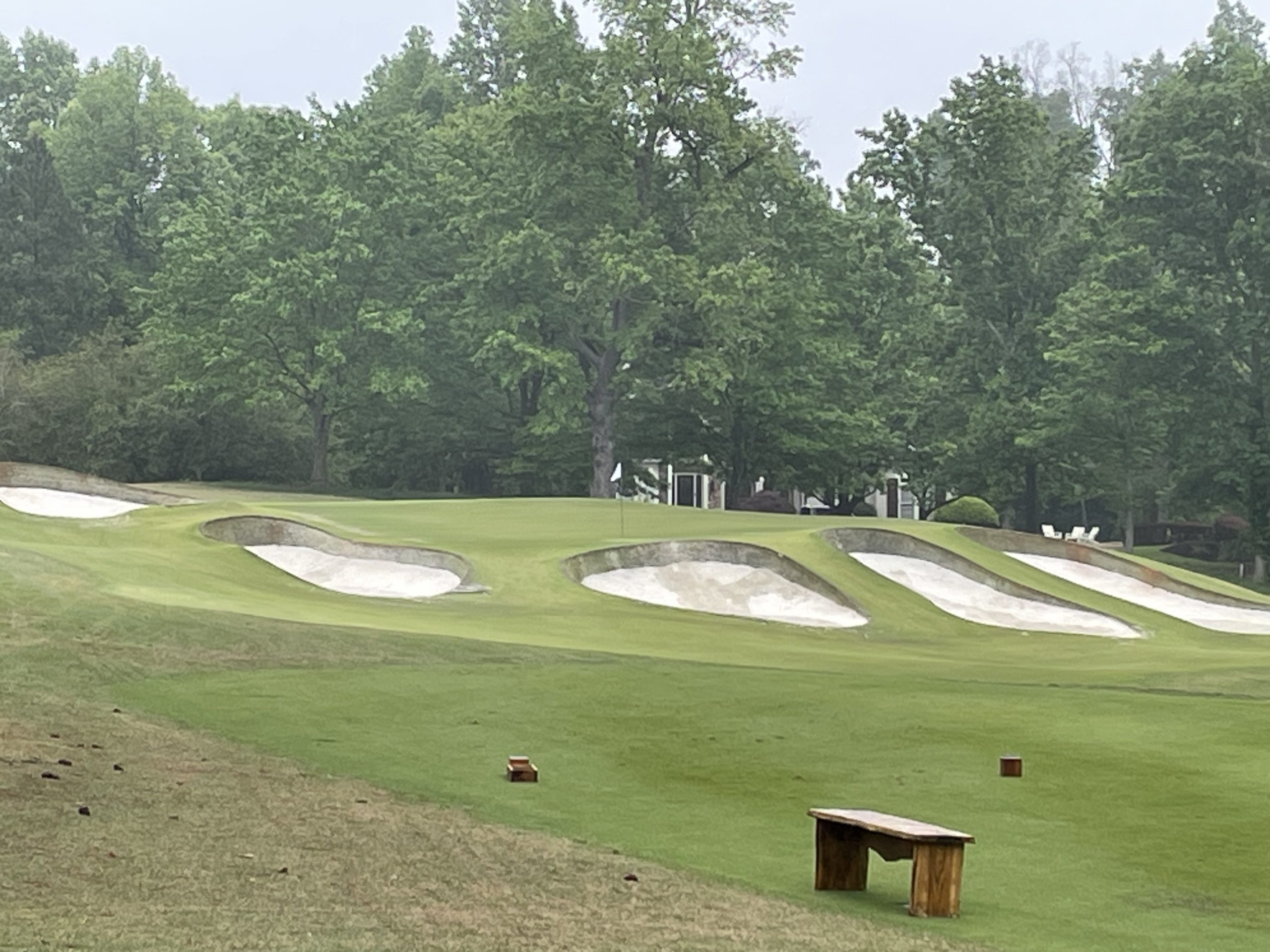
The putting surface may look benign but there is still a considerable slope from back to front.
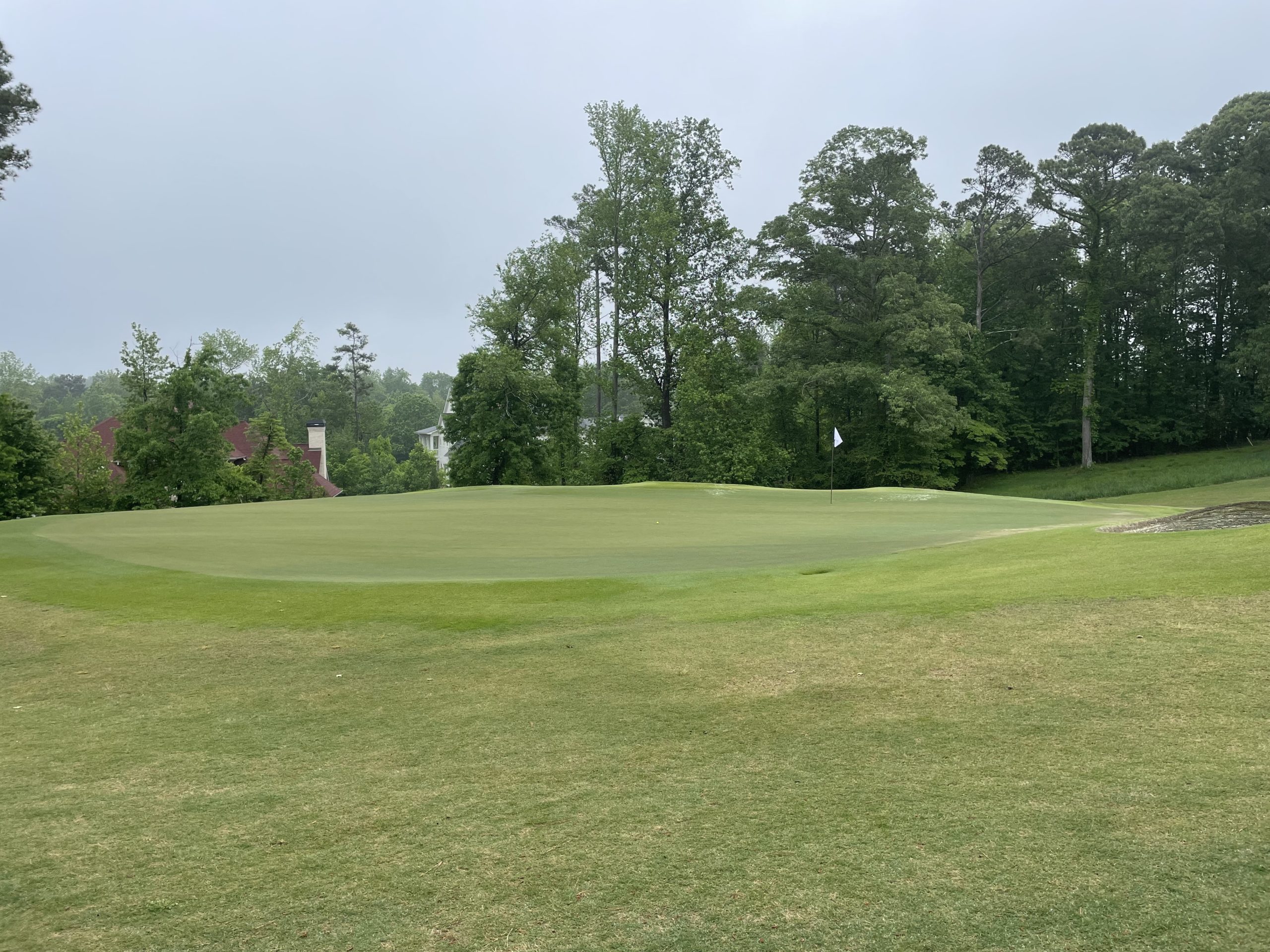
Hole 12 – 358 yards – Par 4
The green is hidden from the tee here and I wouldn’t argue if you wanted to take less than driver. The right side of the fairway is a bit flatter, so keep that in mind for the approach shot.
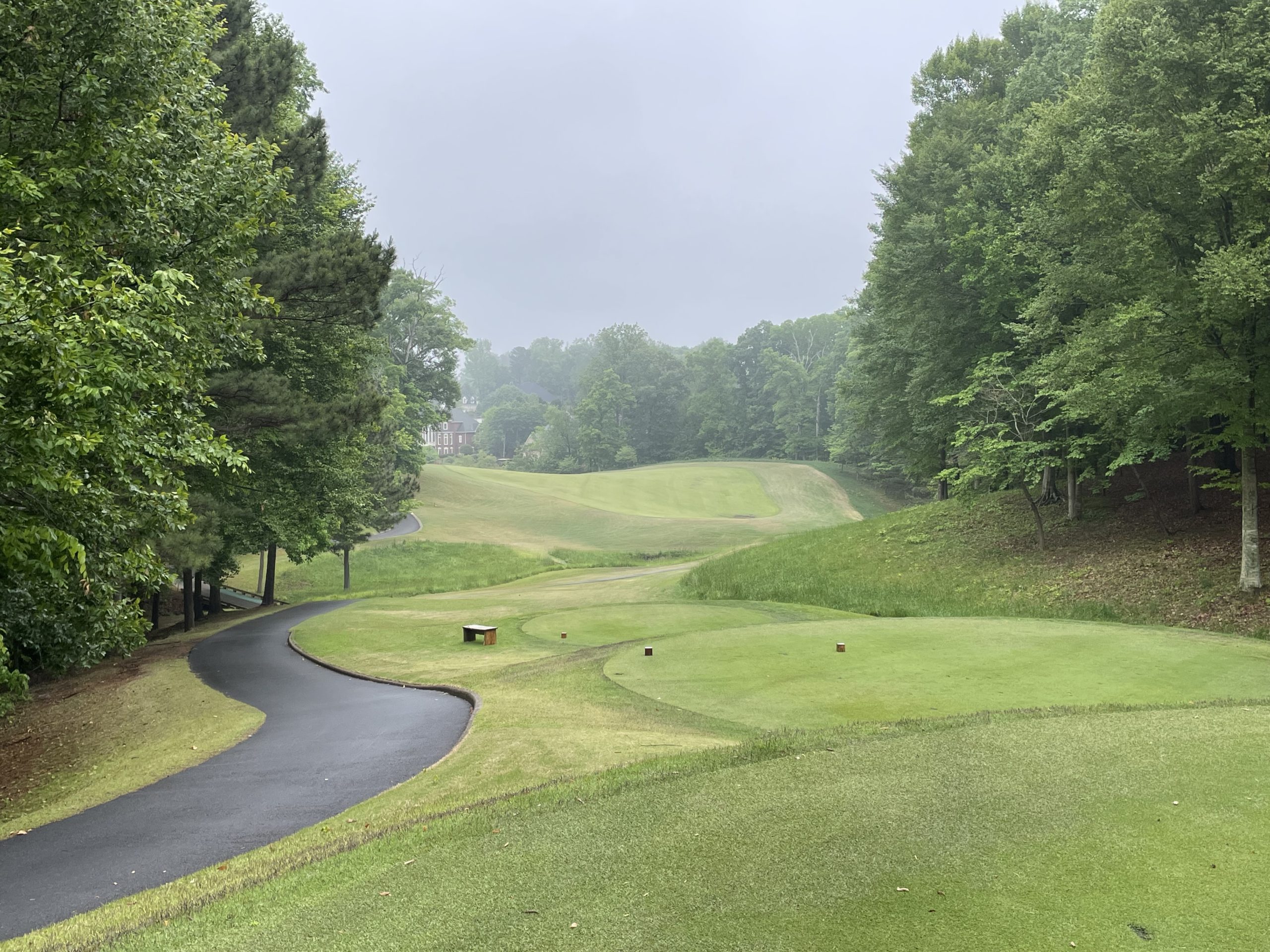
A creek fronts the green that is quite large but shallow. They had a sucker pin out there for me!
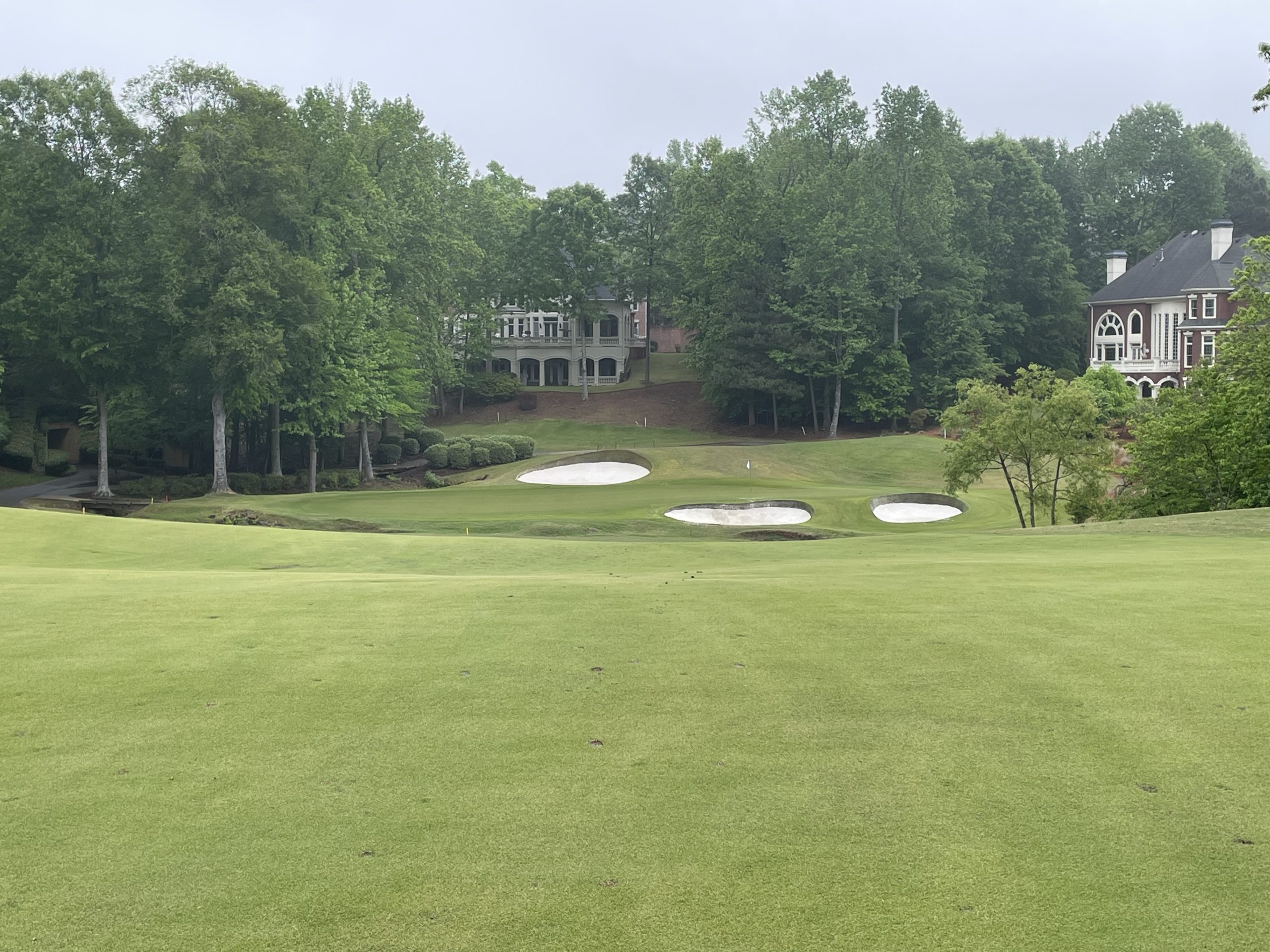
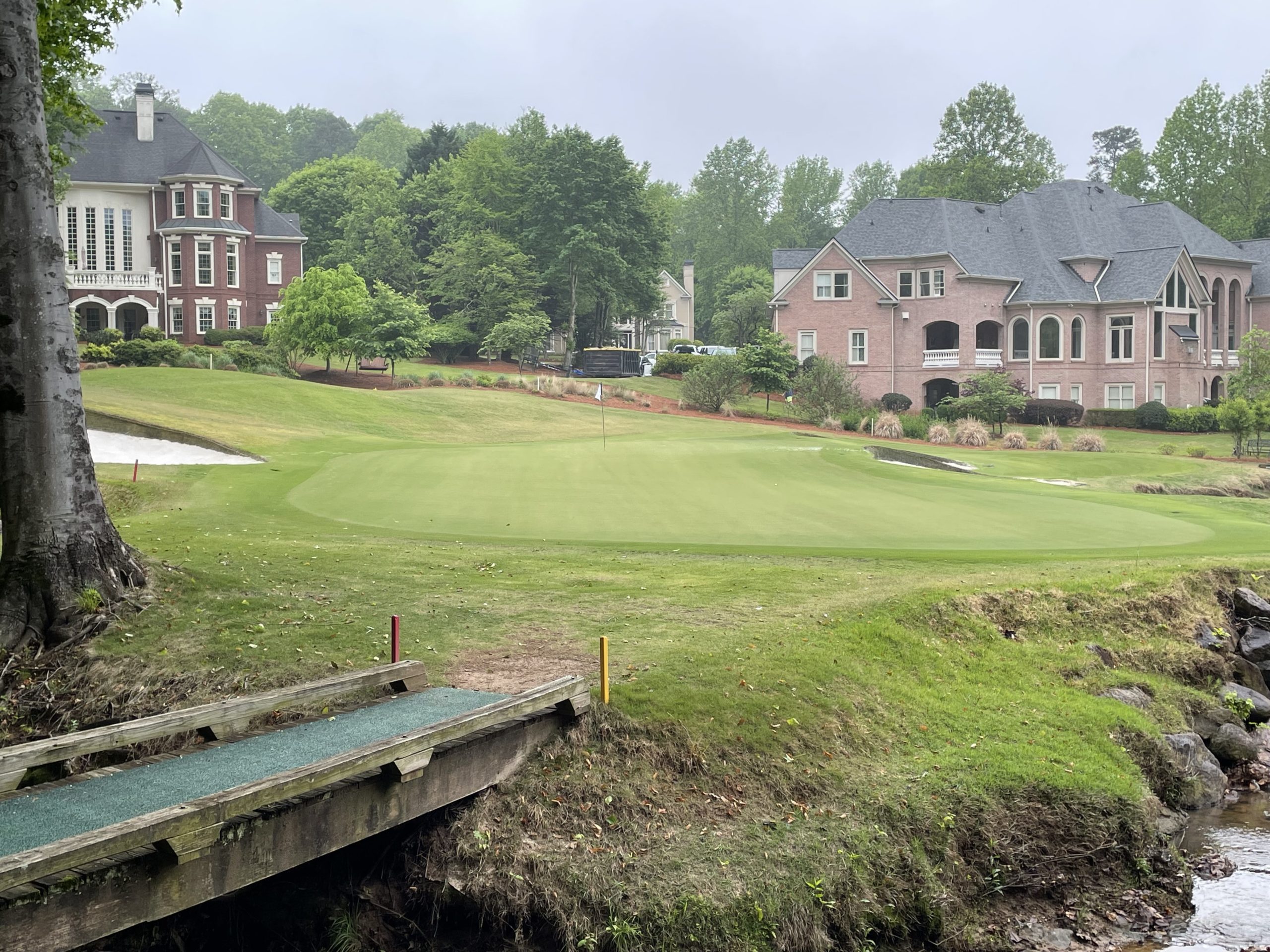
Hole 13 – 526 yards – Par 5
This hole was under construction for my visit, so this is the tee shot view. It bends to the left with a fairway that tumbles down from right to left as you progress.
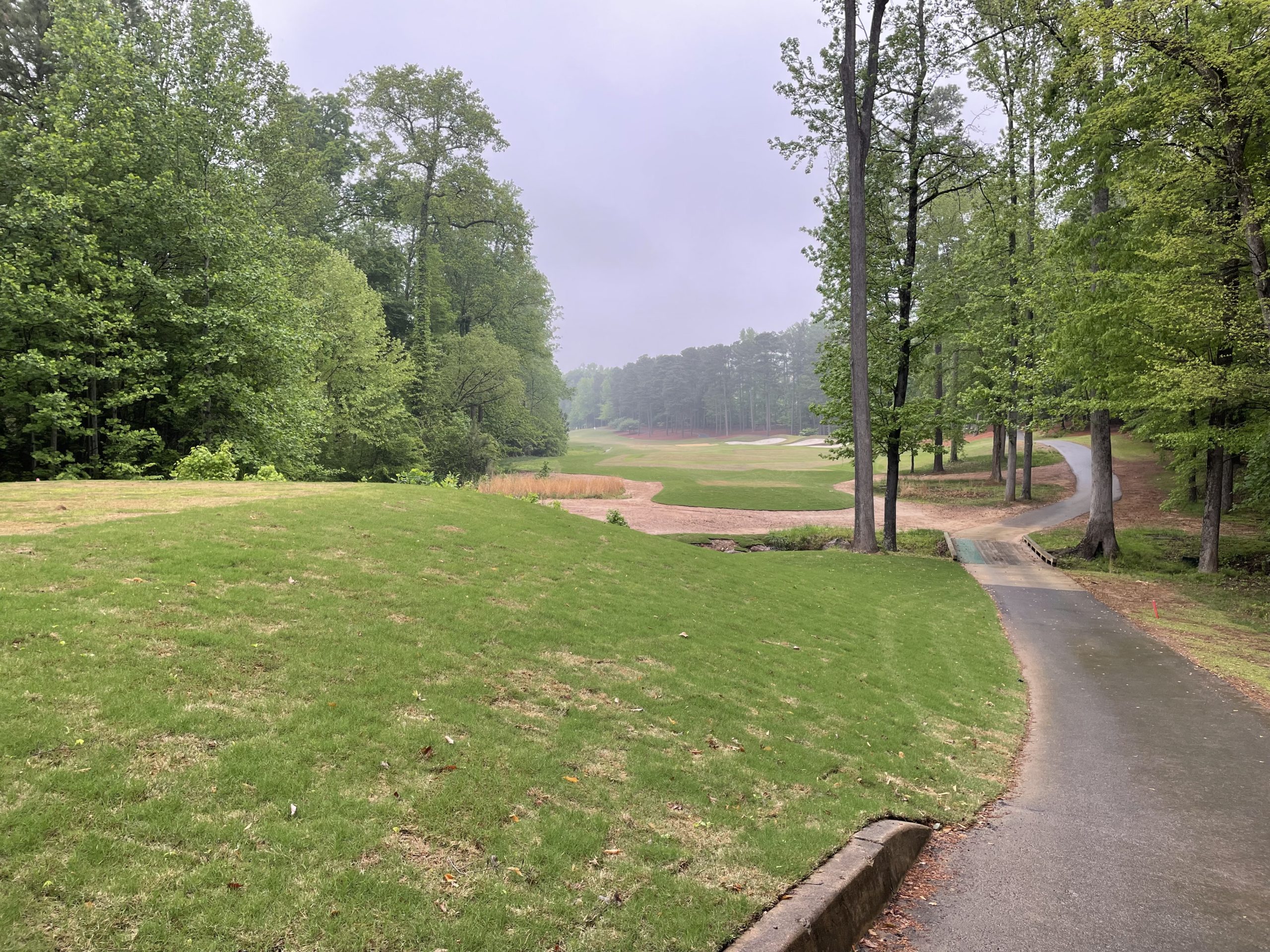
I also got to see some local wildlife. This lady was supervising the maintenance work.
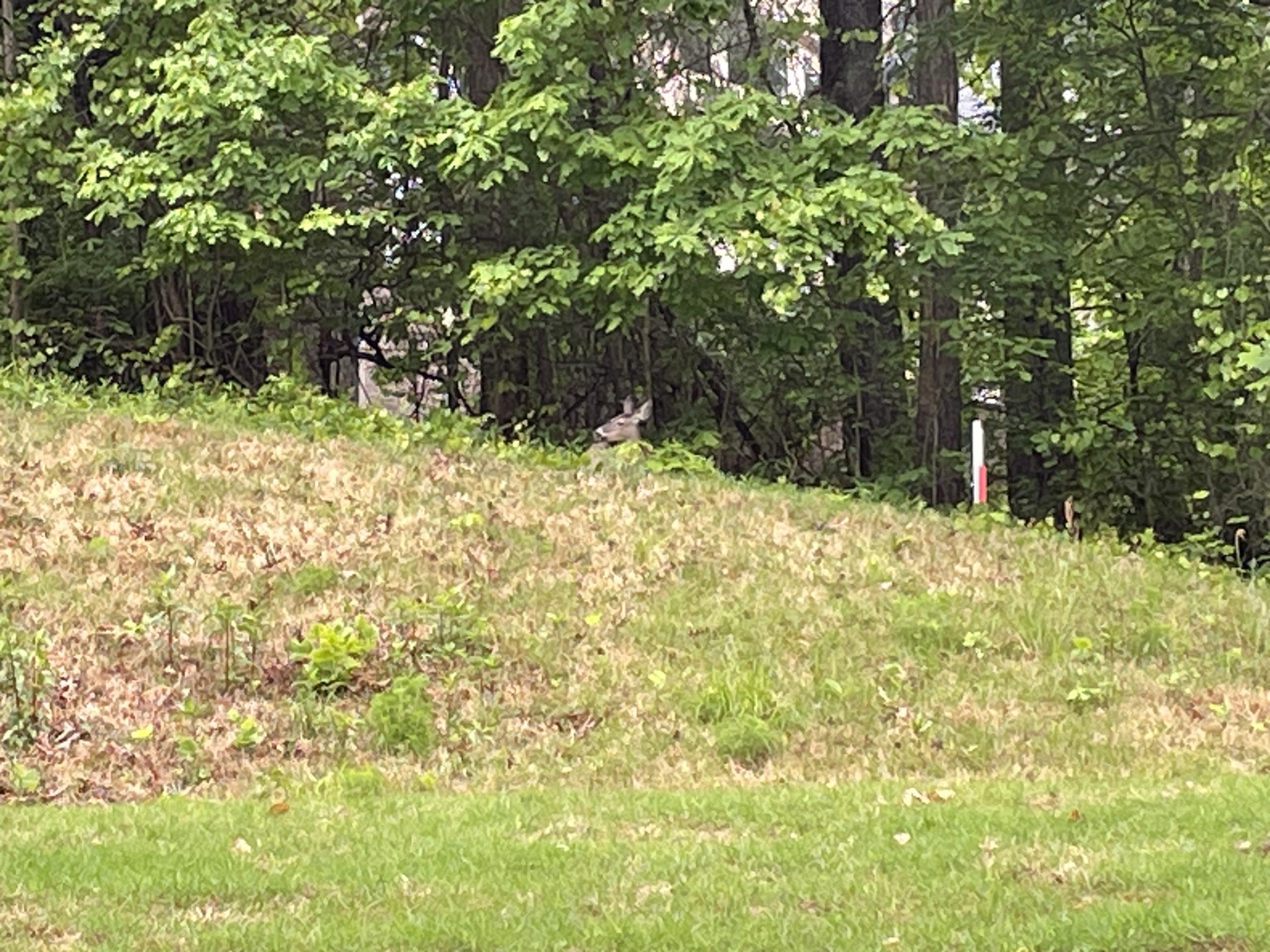
Here’s a look from about 100 yards out.
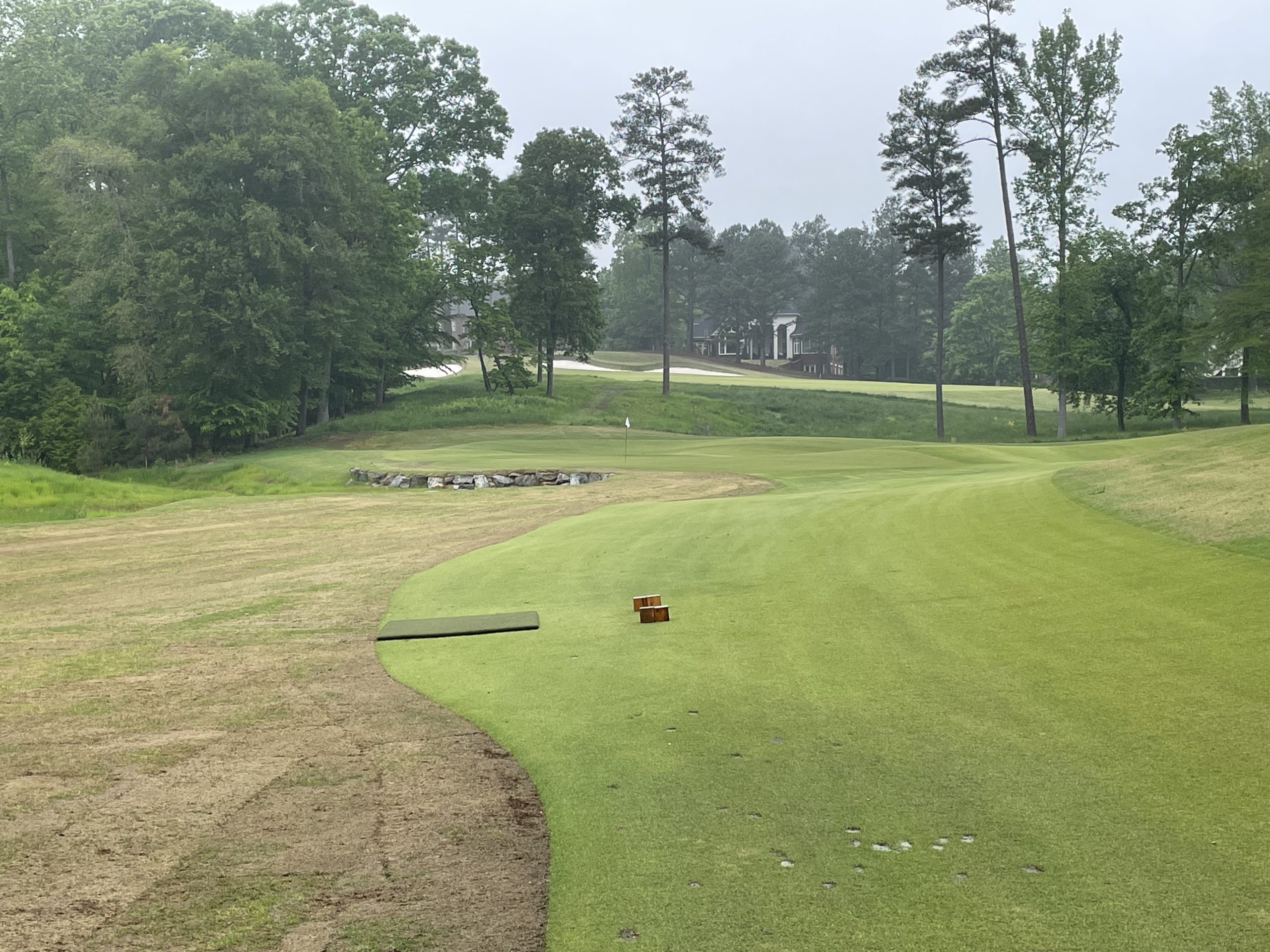
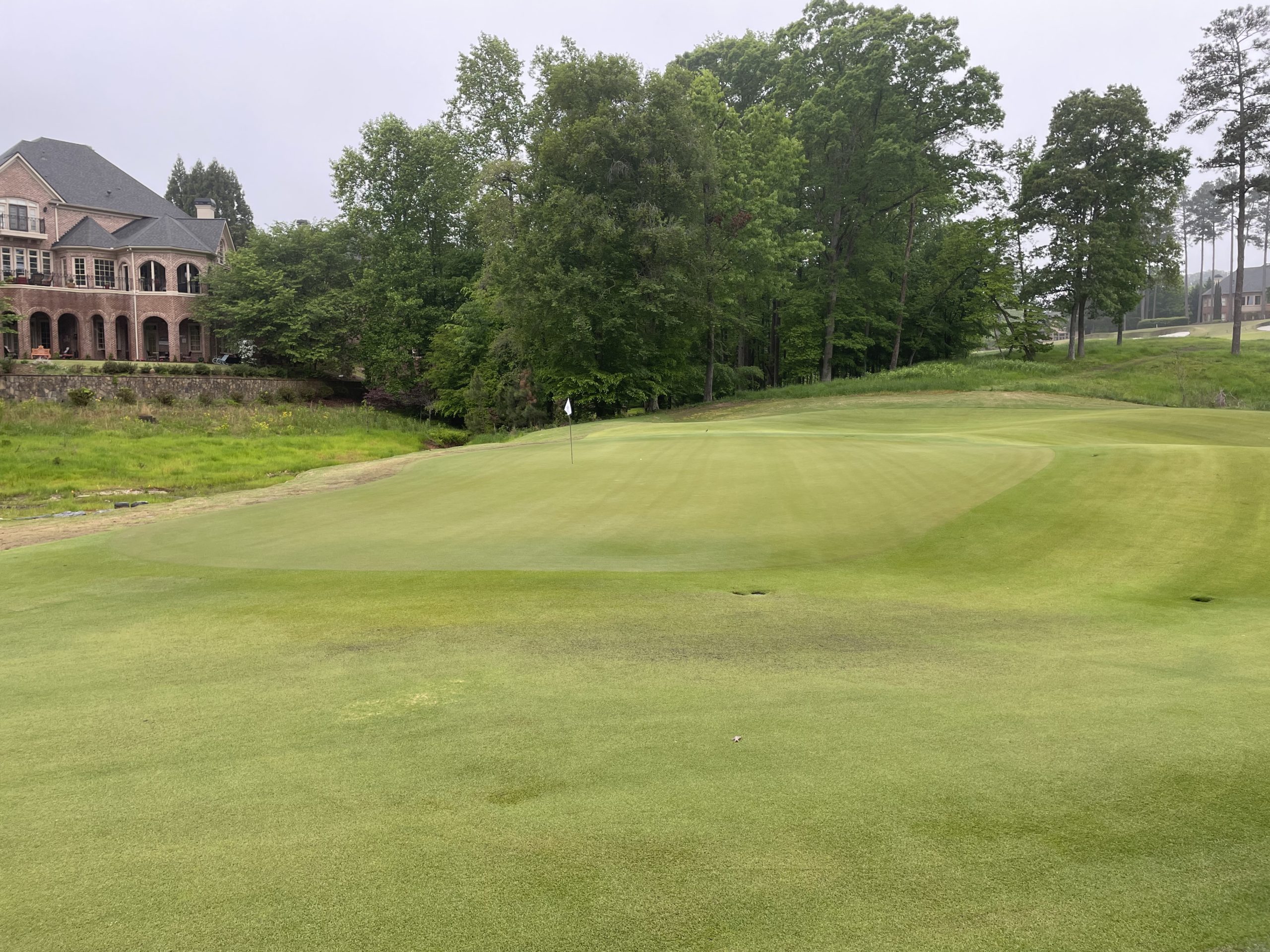
Hole 14 – 391 yards – Par 4
Similar to the thrid hole, this one bends to the left with the bunkers serving as good alignment aids. The hole plays less than the yardage due to the downslope to the green.
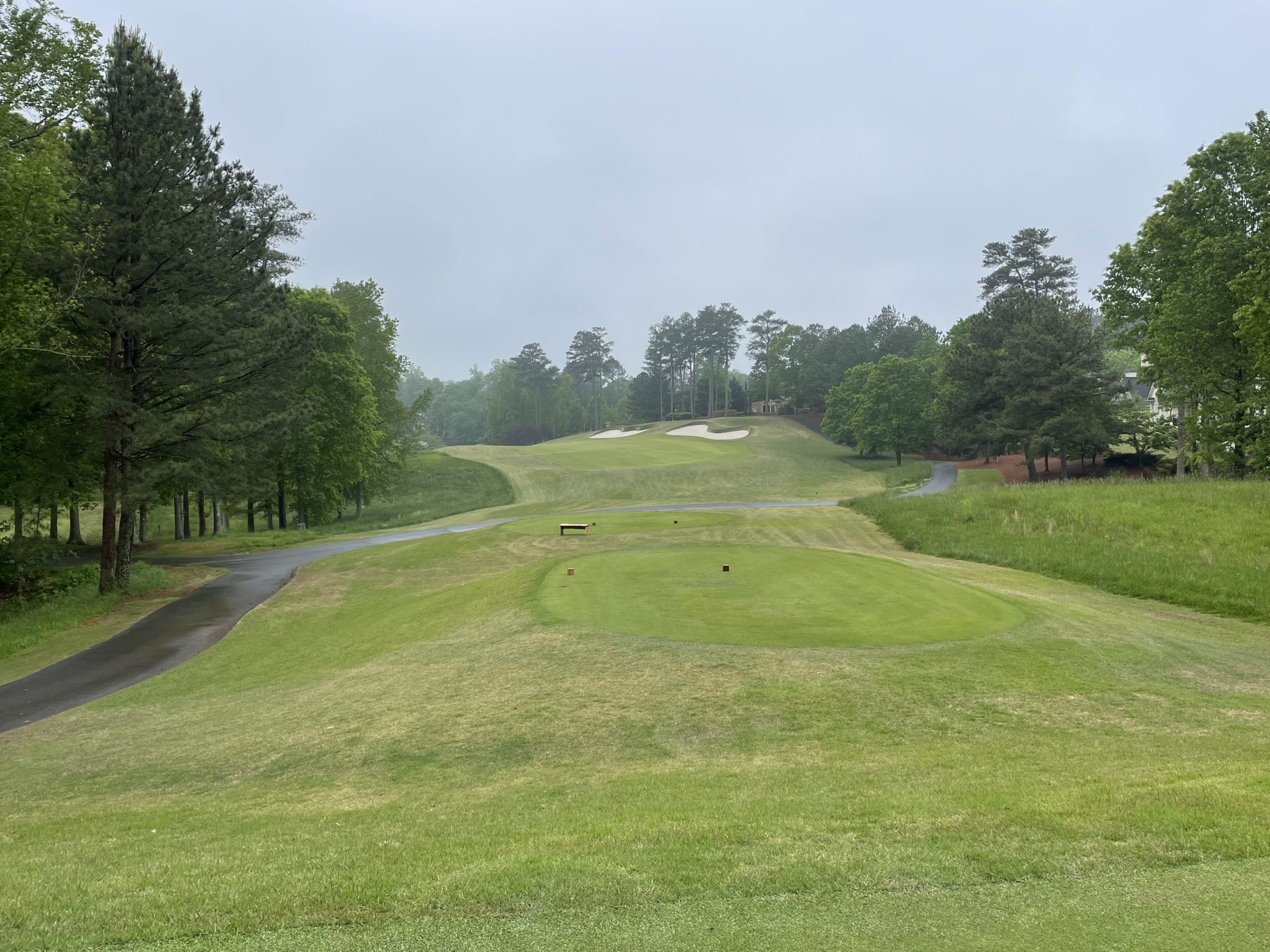
Short and long are no good here.
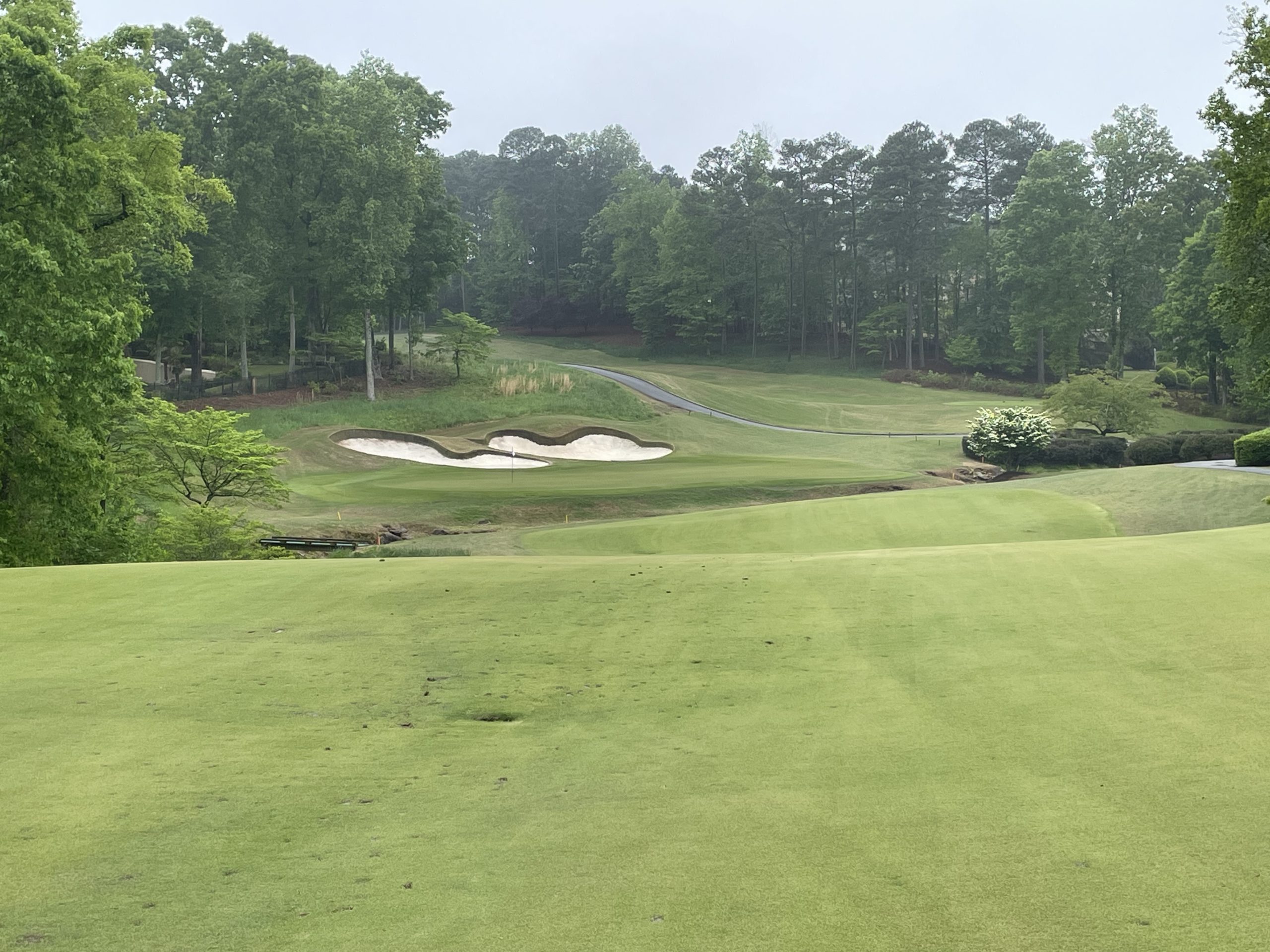
Take note of the fairway slope as you look back up this hole.
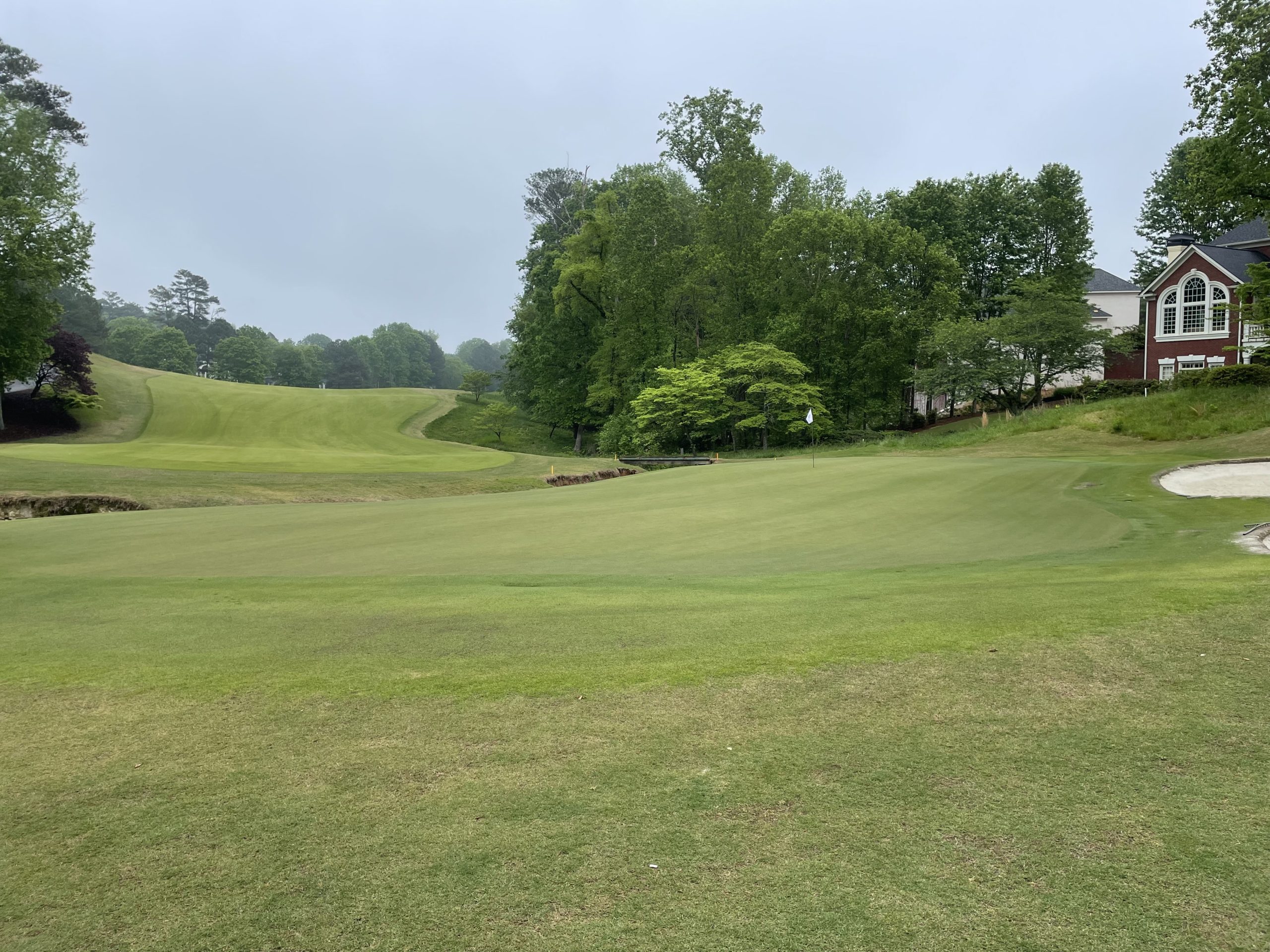
Hole 15 – 542 yards – Par 5
This hole features all the slopes and really exemplifies the theme of TPC Sugarloaf. As you can see, the landing area is blind. The tee shot should favor the right and you can go as far as you like.
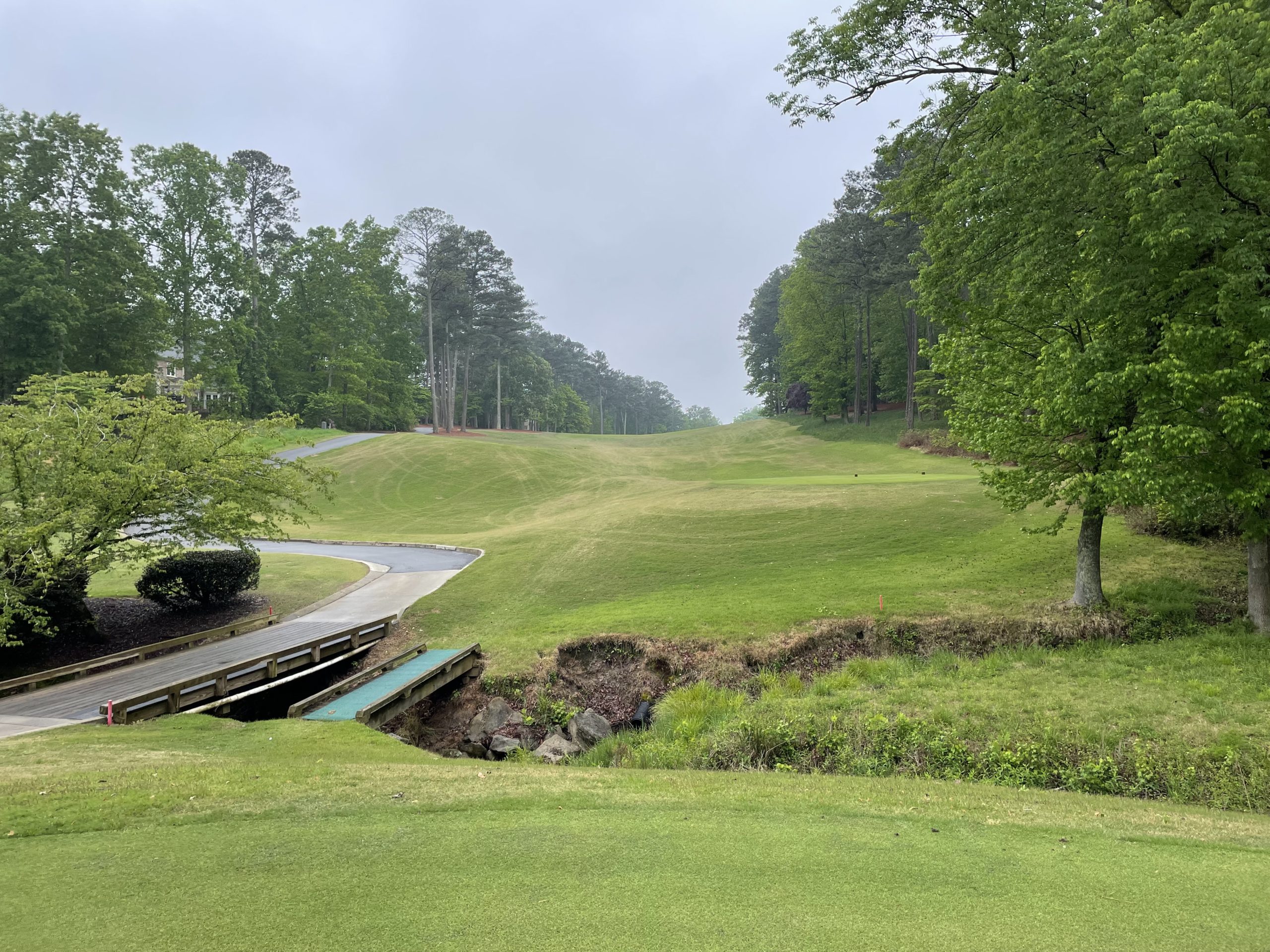
Once you crest the hill, the rest of the hole comes into focus. It bends right before rising sharply to the green. Three good shots are required for most golfers to reach this green.
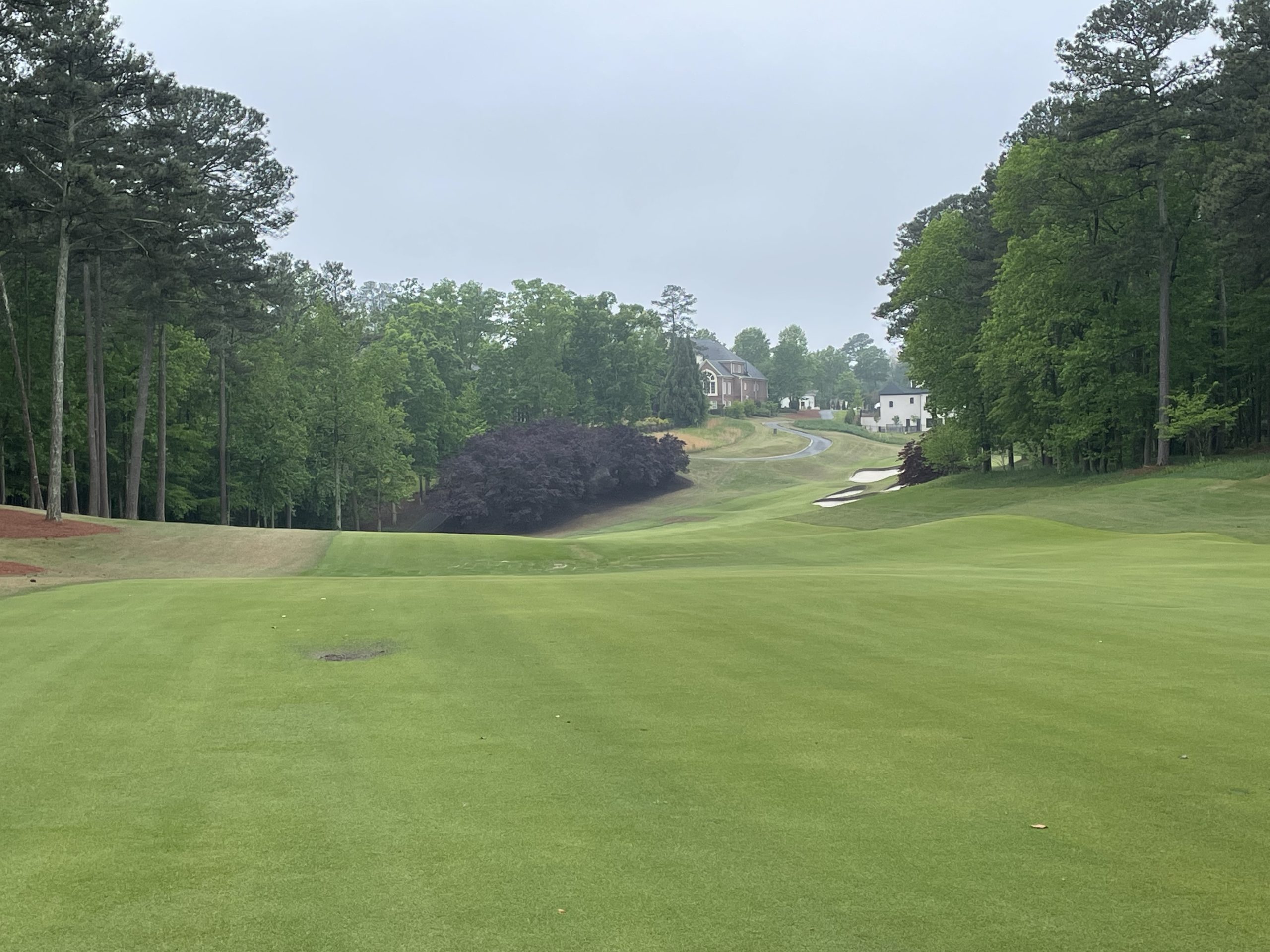
Just look at these bunkers and the slope of the area fronting the green!
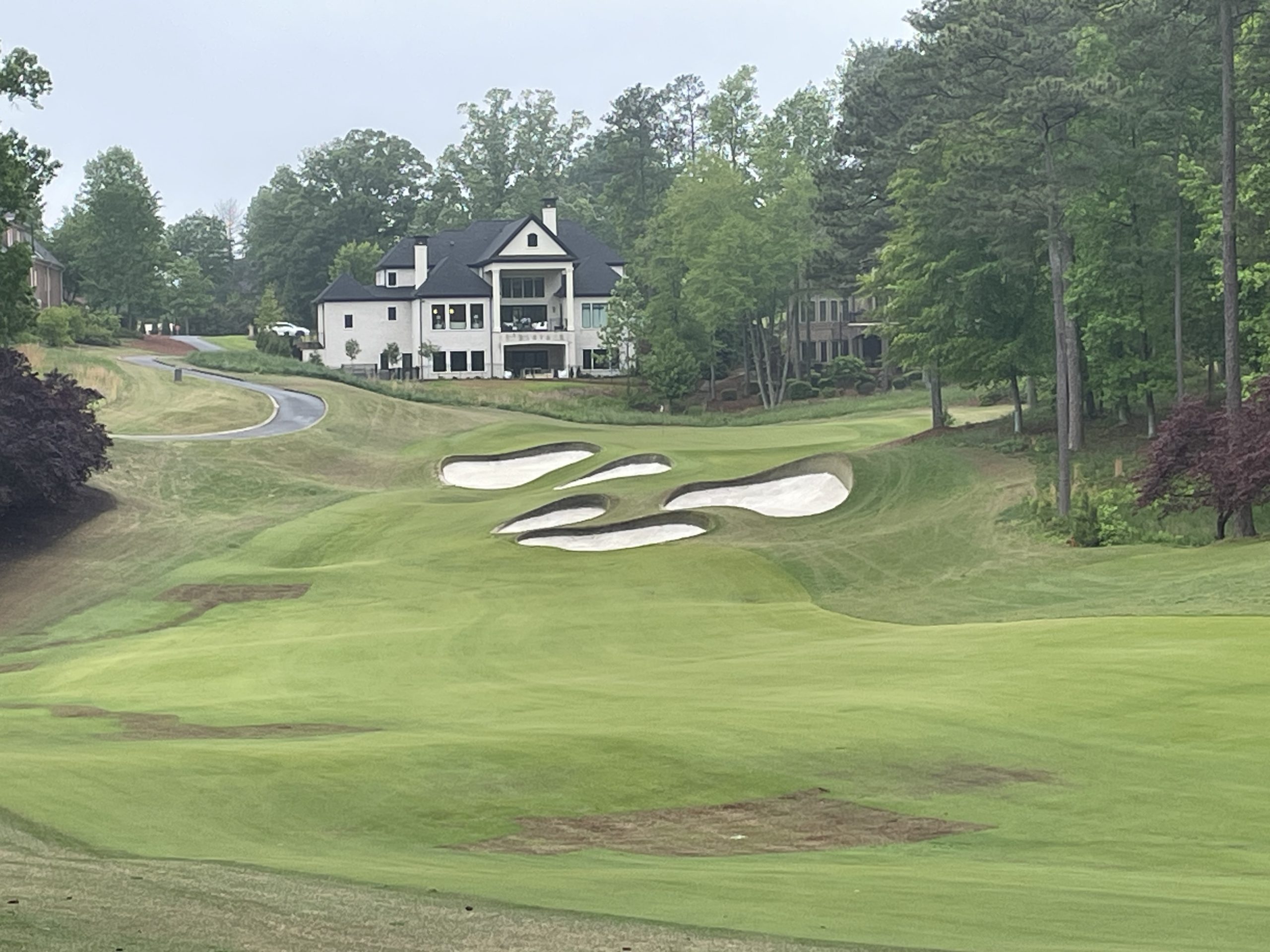
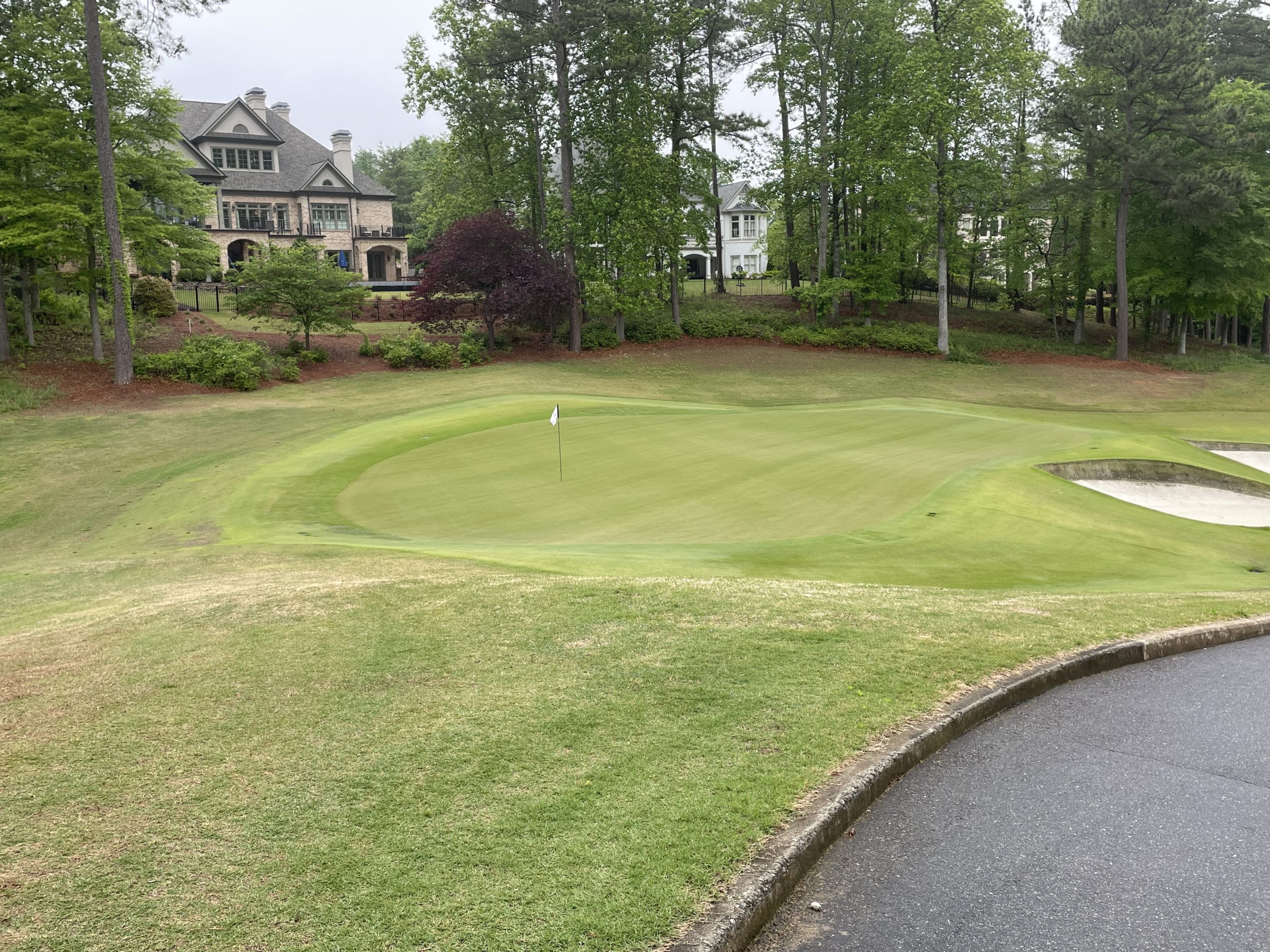
Hole 16 – 419 yards – Par 4
The tree on the left and the bunkers on the right were directly in play for me, so they provided good frames for the hole. Anything on the left side will provide a better angle to the green.
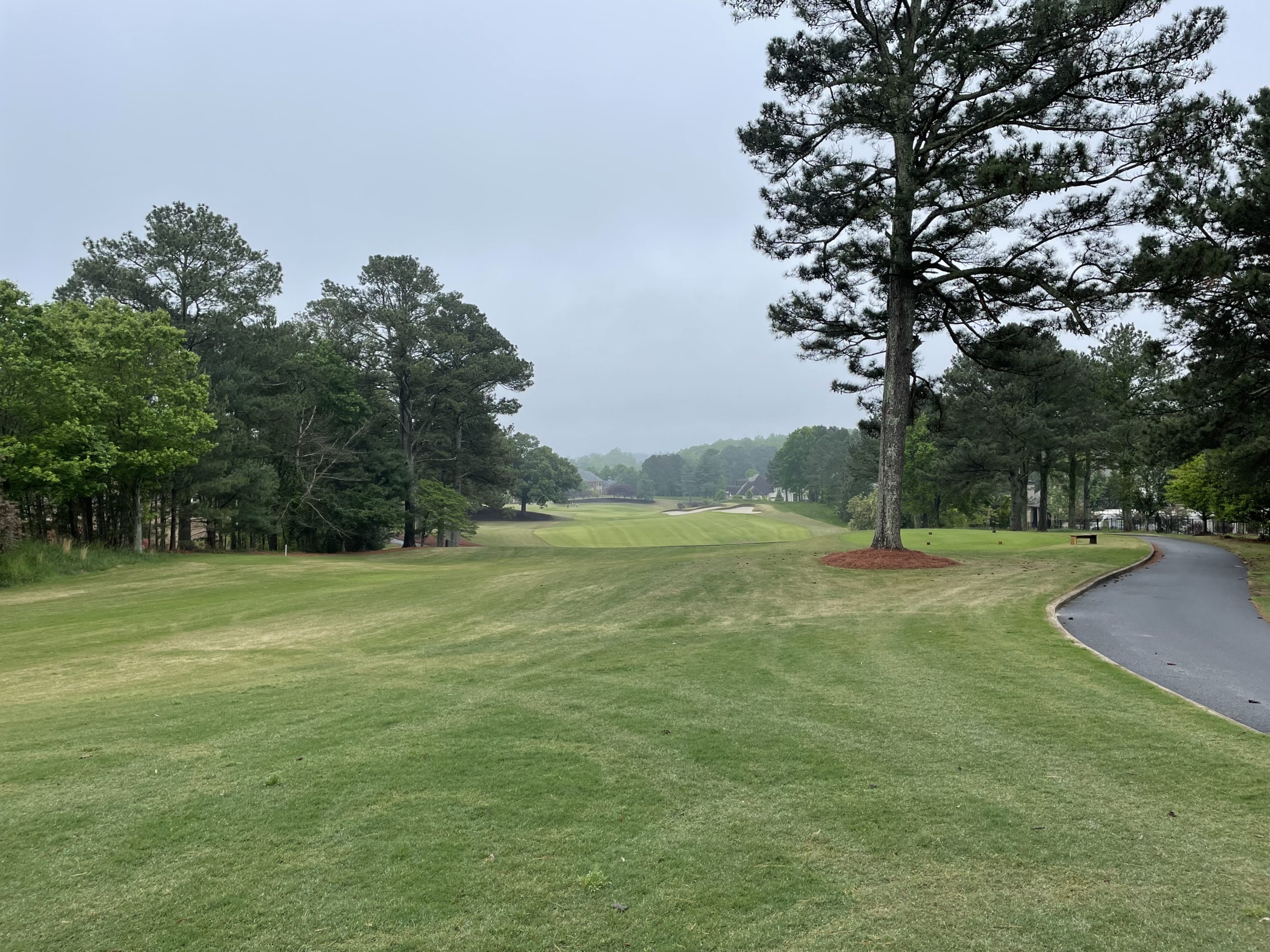
You’ll want to be cognizant of the pin position in relation to the slopes on this green. Being in the proper section will result in a much easier putt.
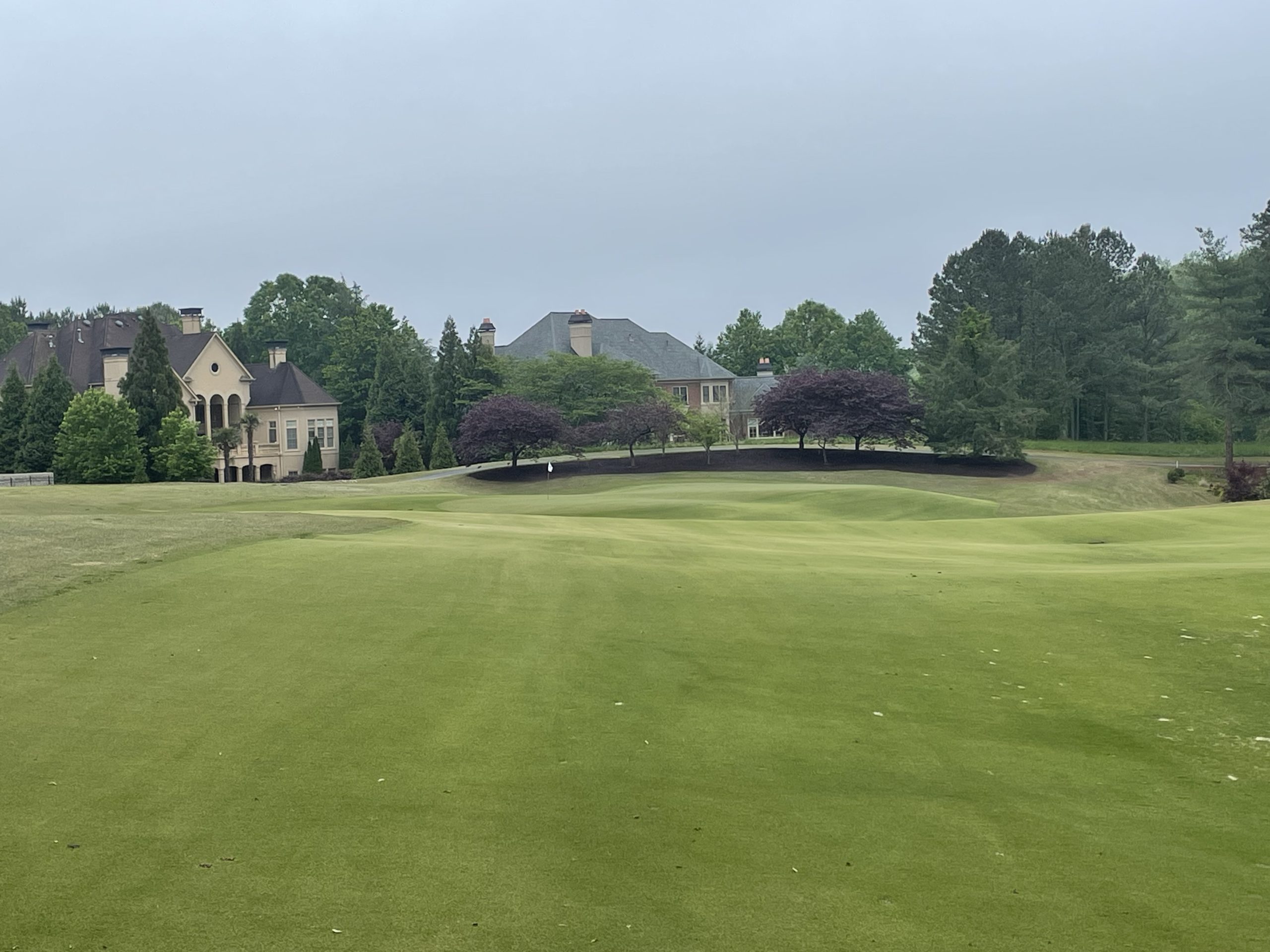
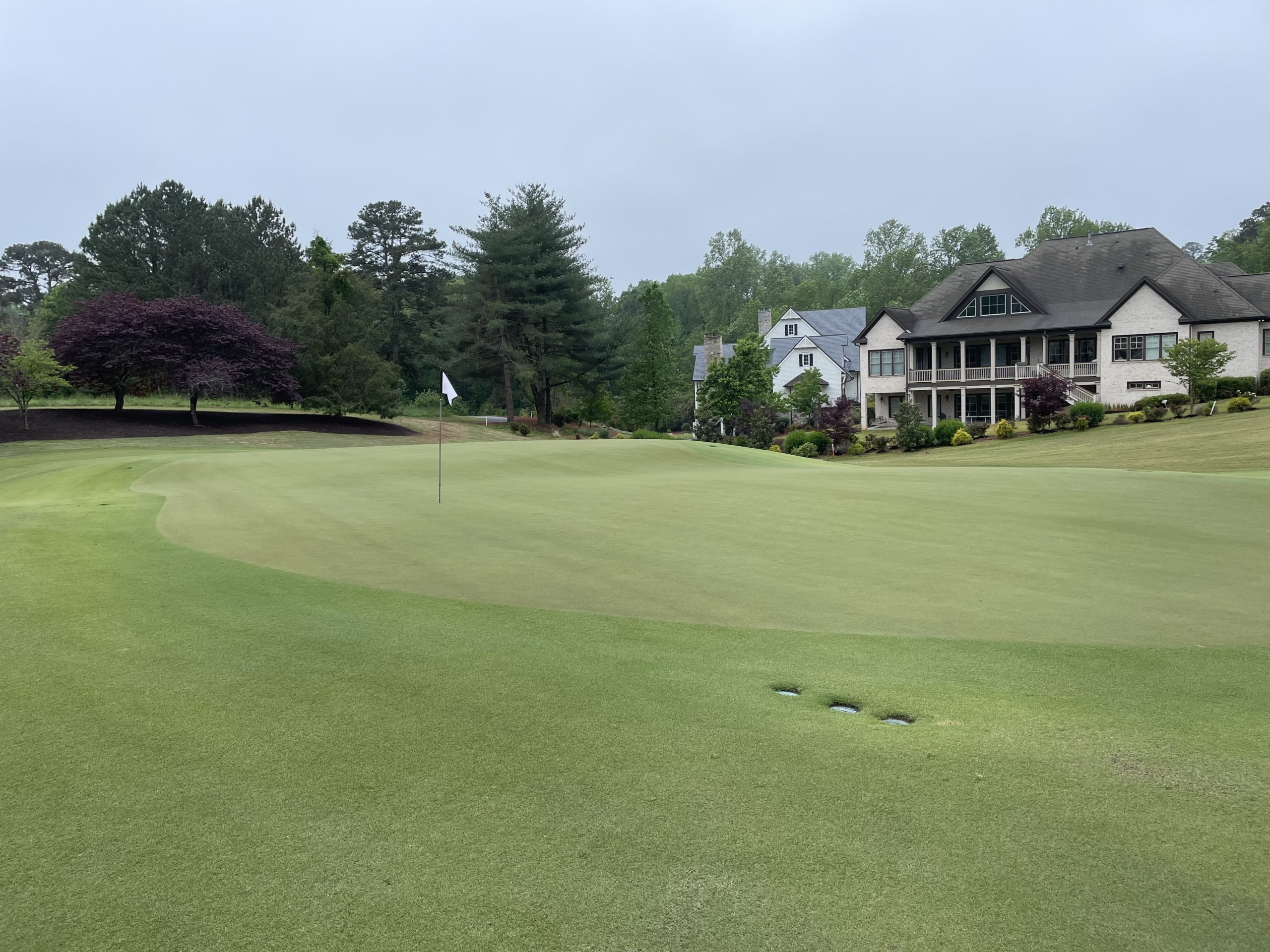
Hole 17 – 222 yards – Par 3
Thankfully, this long hole plays downhill and is open in front. I’d say misses to the left make for tougher pars.
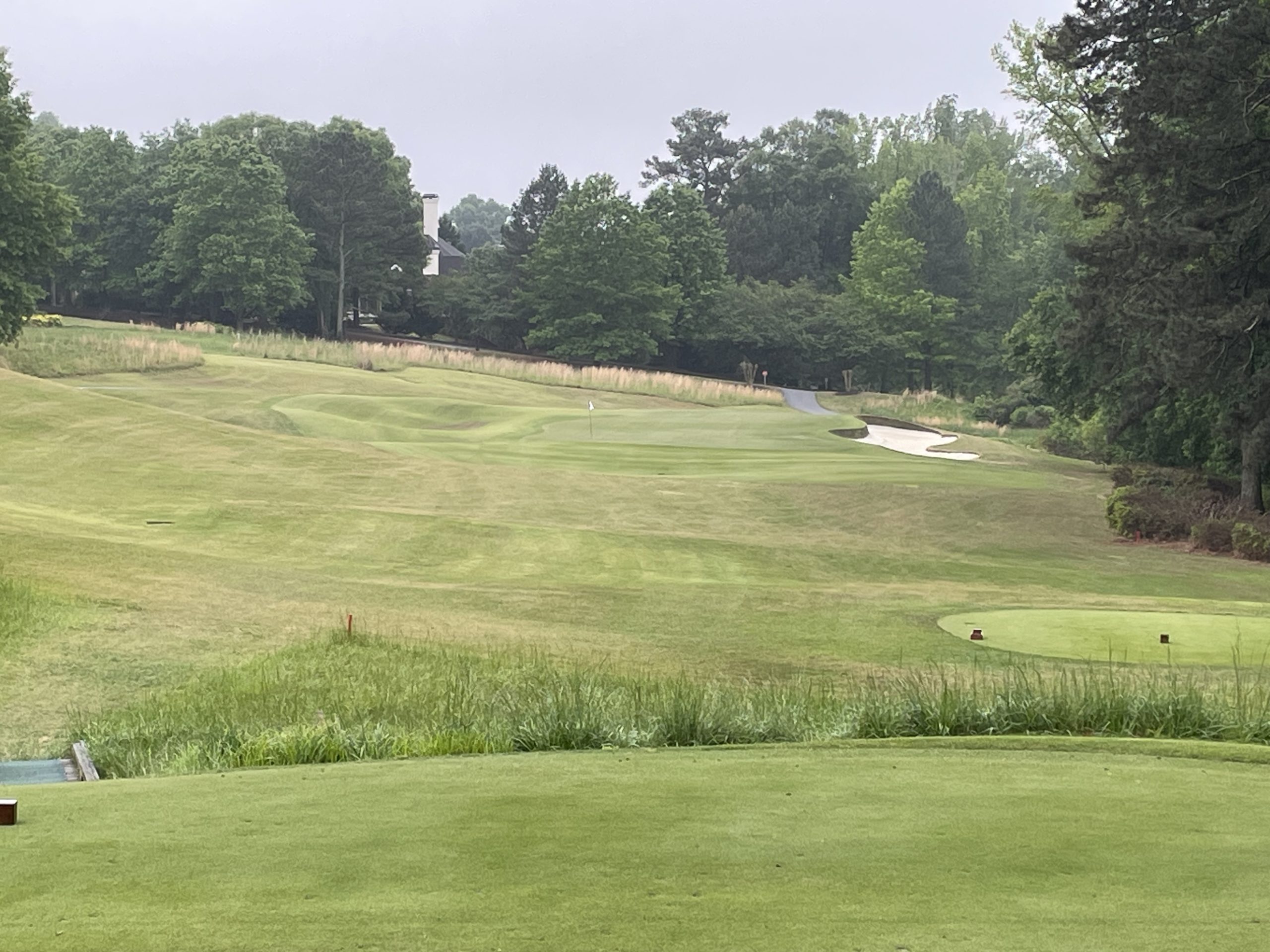
The green is quite long, so the club selection here will vary widely.
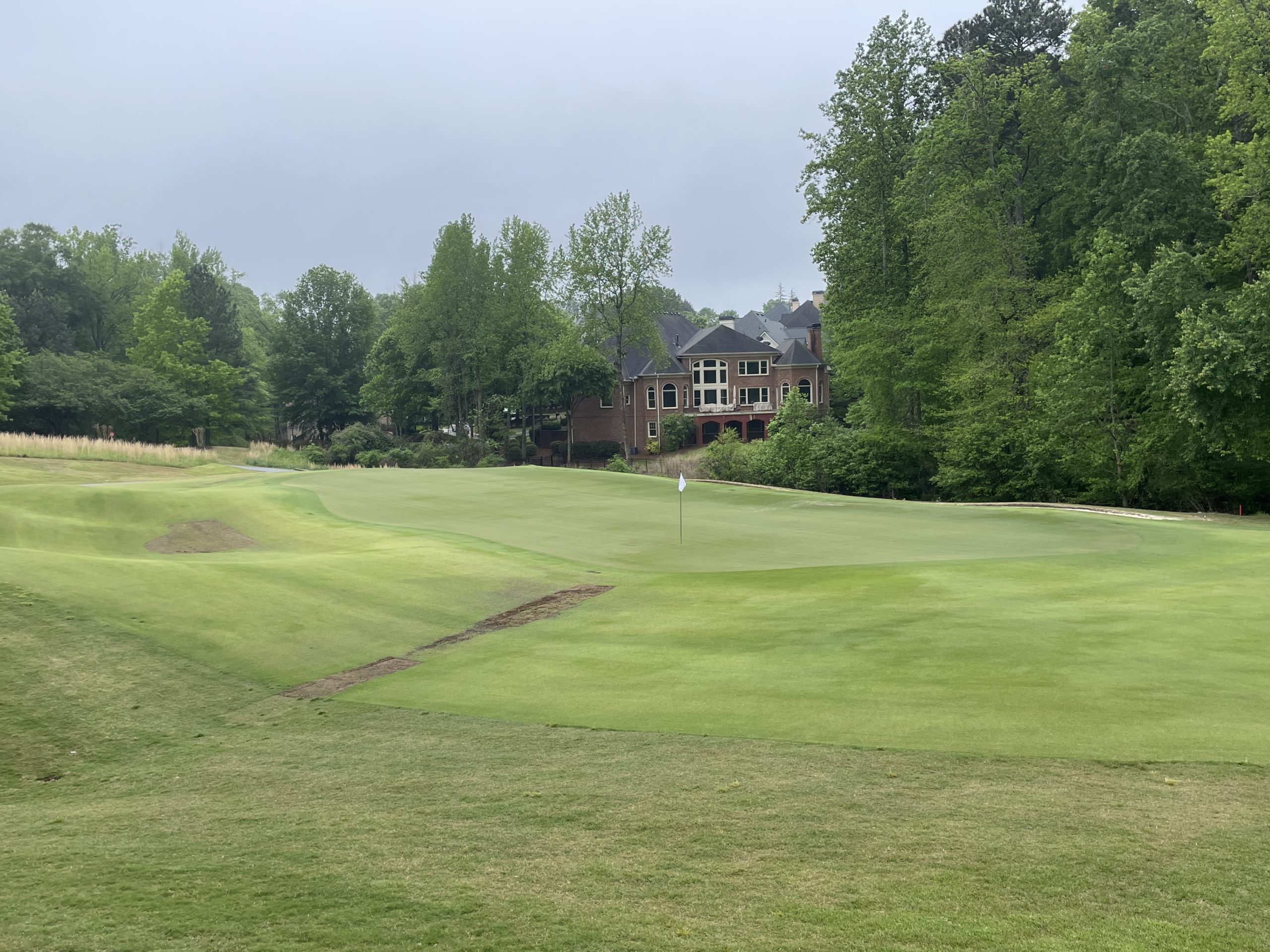
Hole 18 – 434 yards – Par 4
You play through a chute here before the hole opens up. The creek going around this tee continues up the right side and is definitely in play.
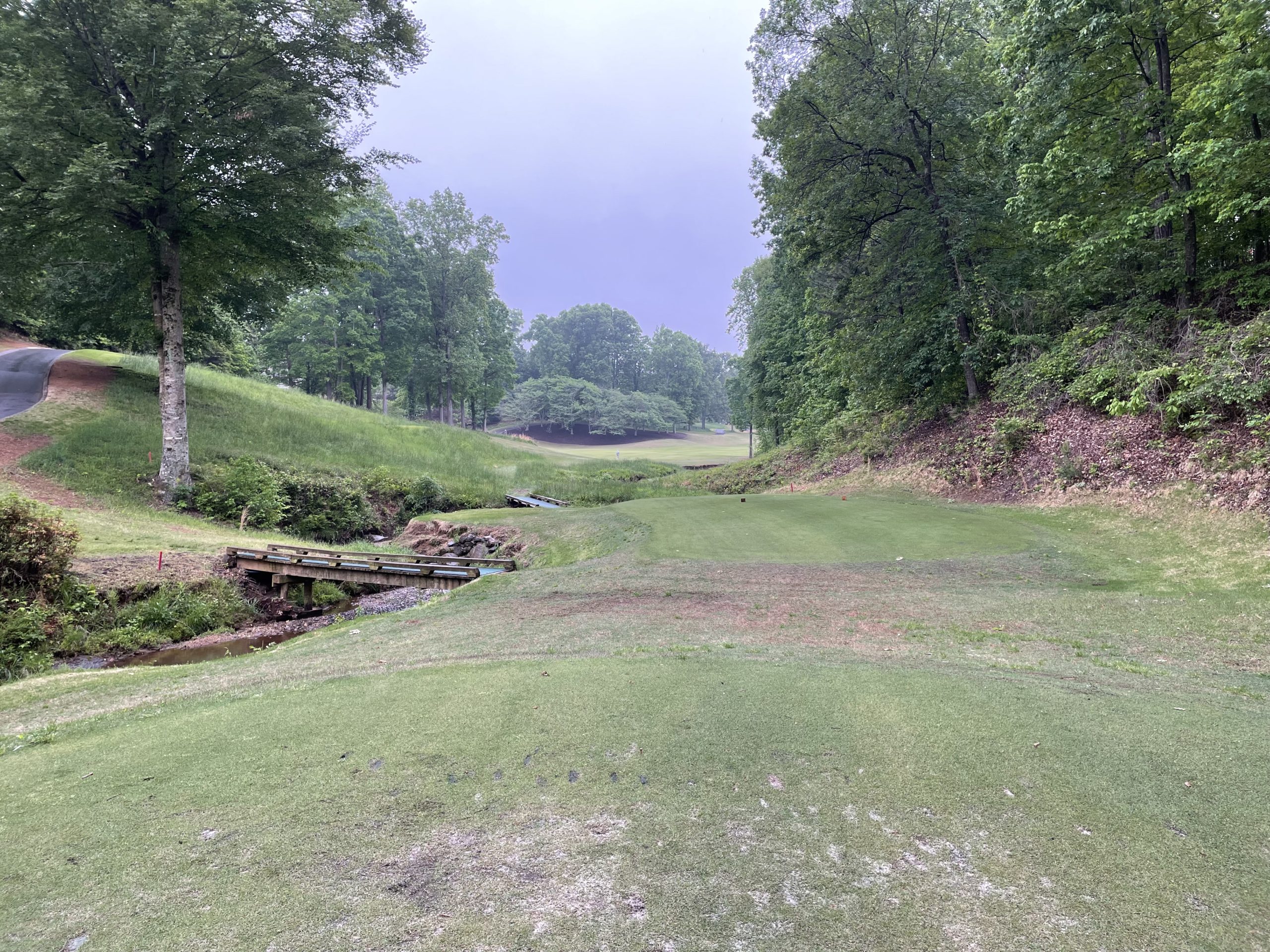
The approach is challenging here, no doubt. Bunkers guard the front left and right while over the green is dead. A long drive makes this much easier on you.
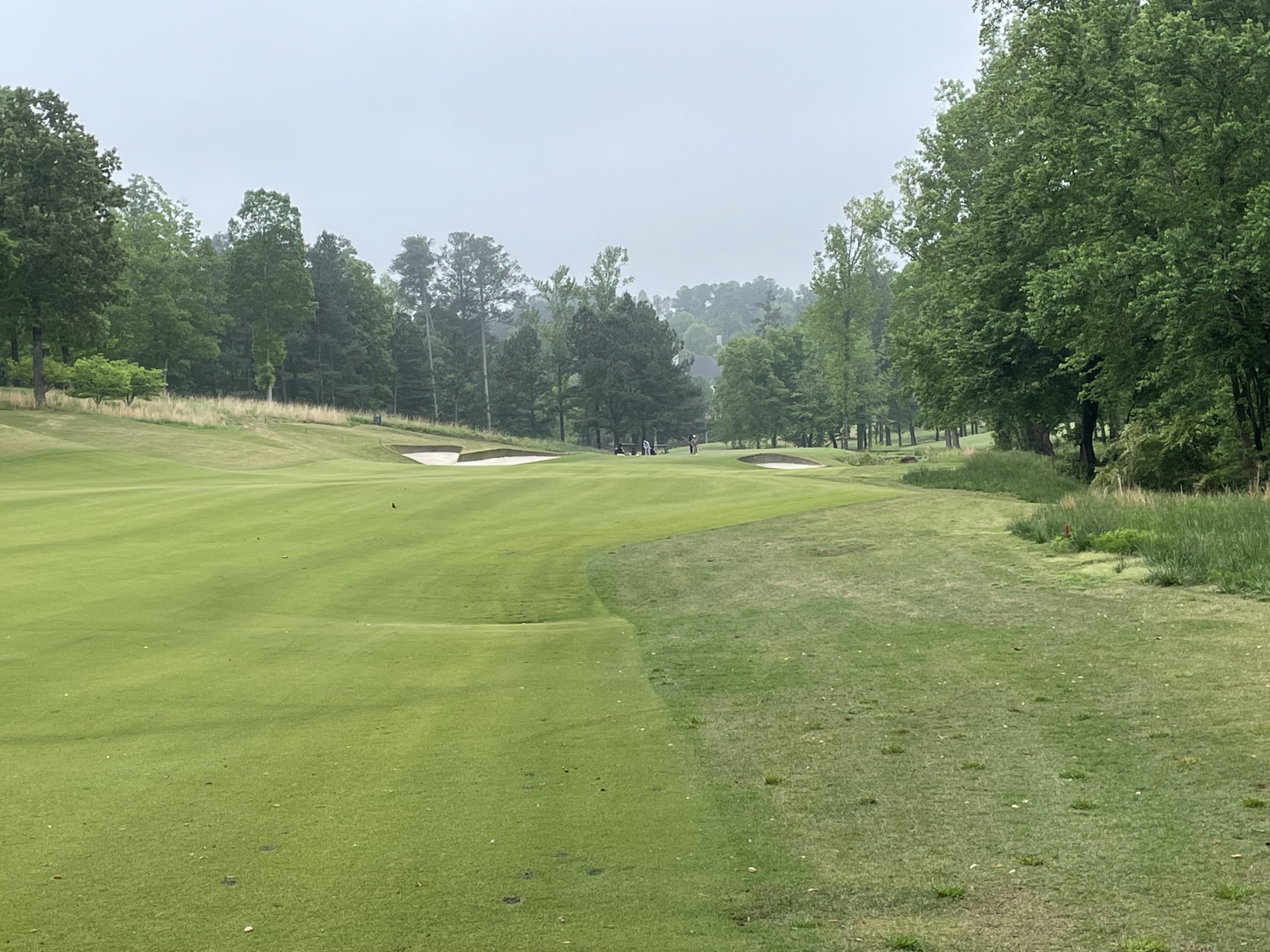
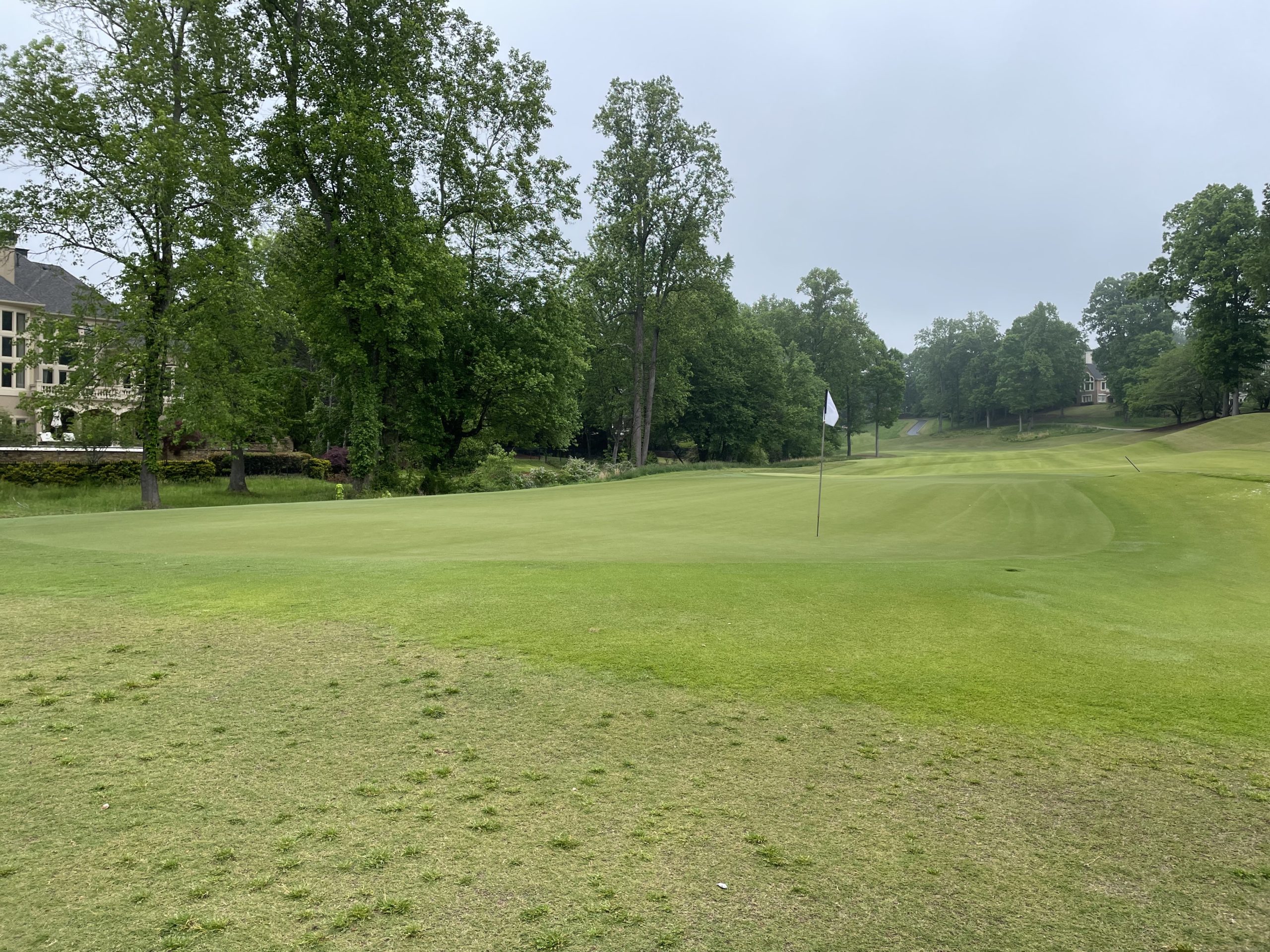
TPC Sugarloaf is a challenging test. I can see why the PGA and Champions Tours have been coming here for so long. The greens were rolling pretty slick, so I can only imagine them on a tournament week. You’d definitely benefit from a few spins around the course to get a feel for all the shots. That said, it’s still quite fun on a single visit.
